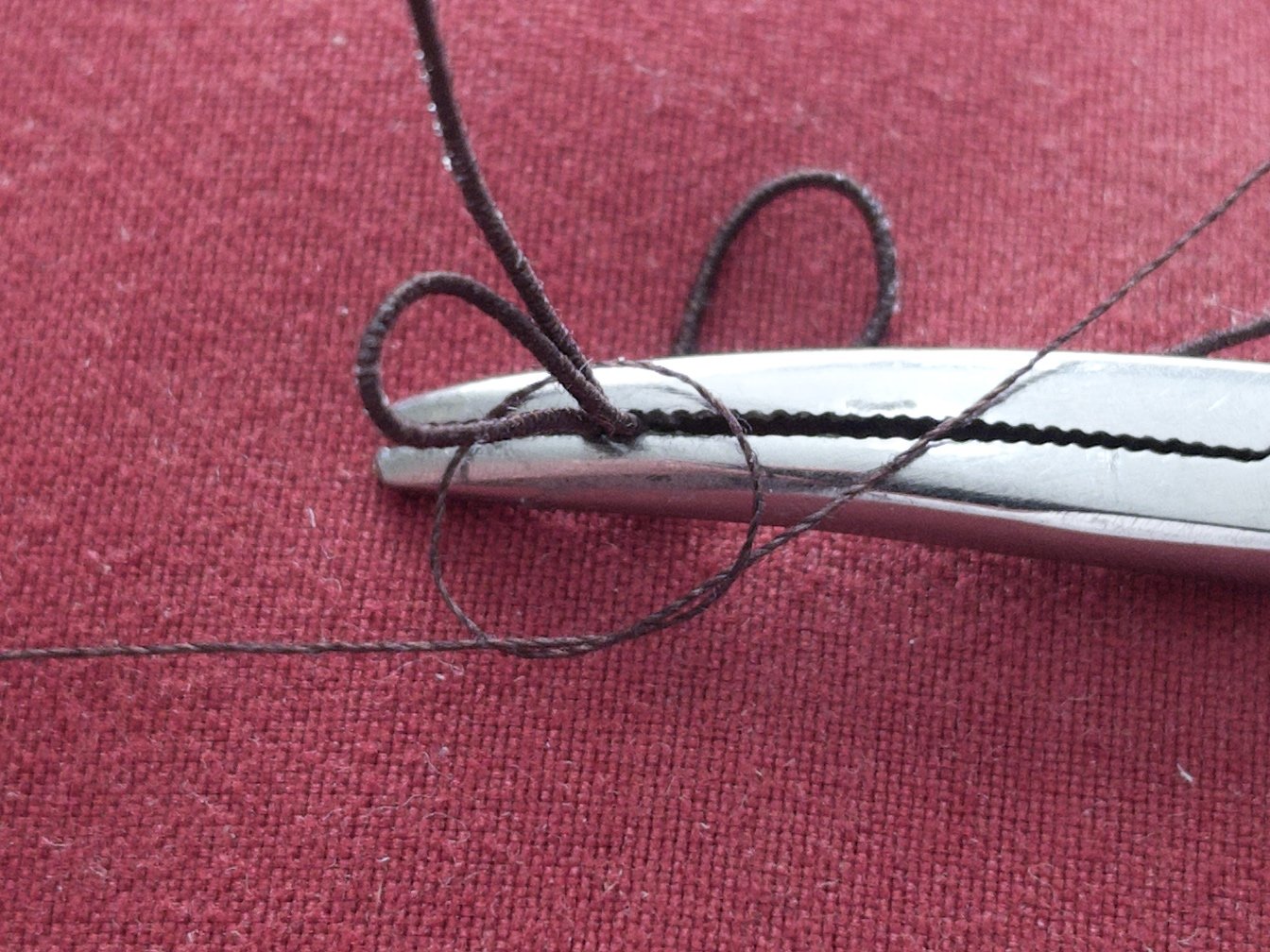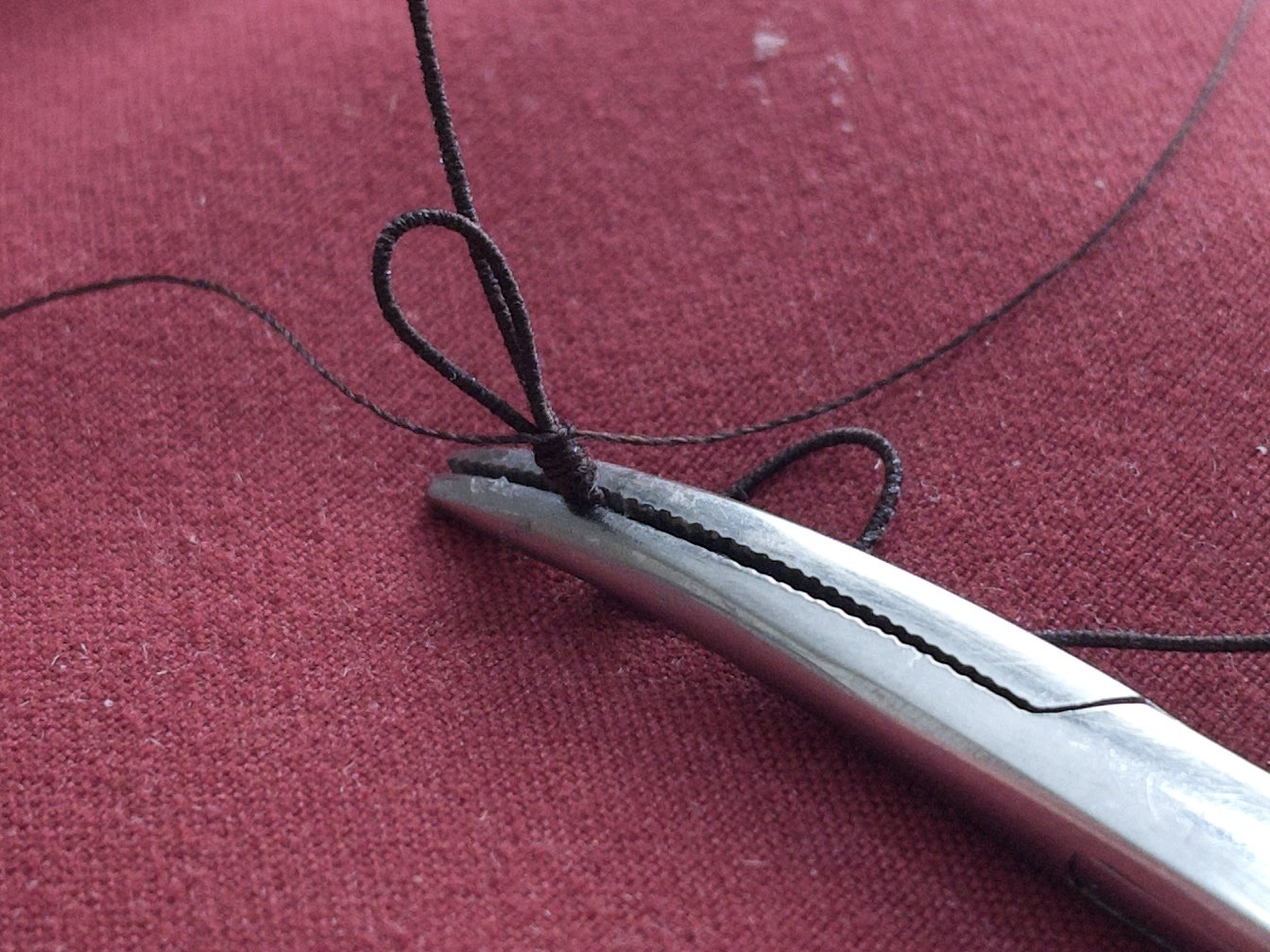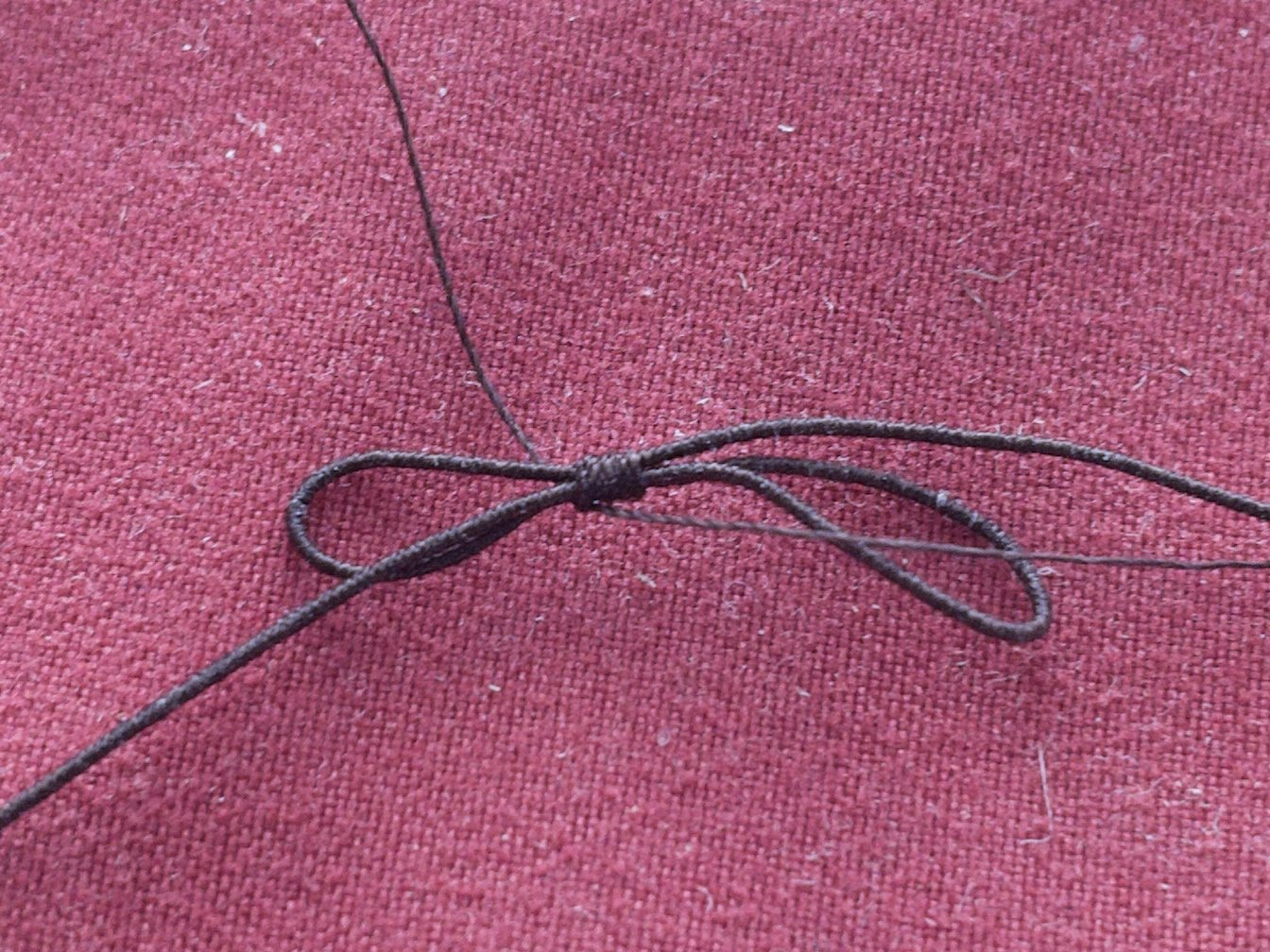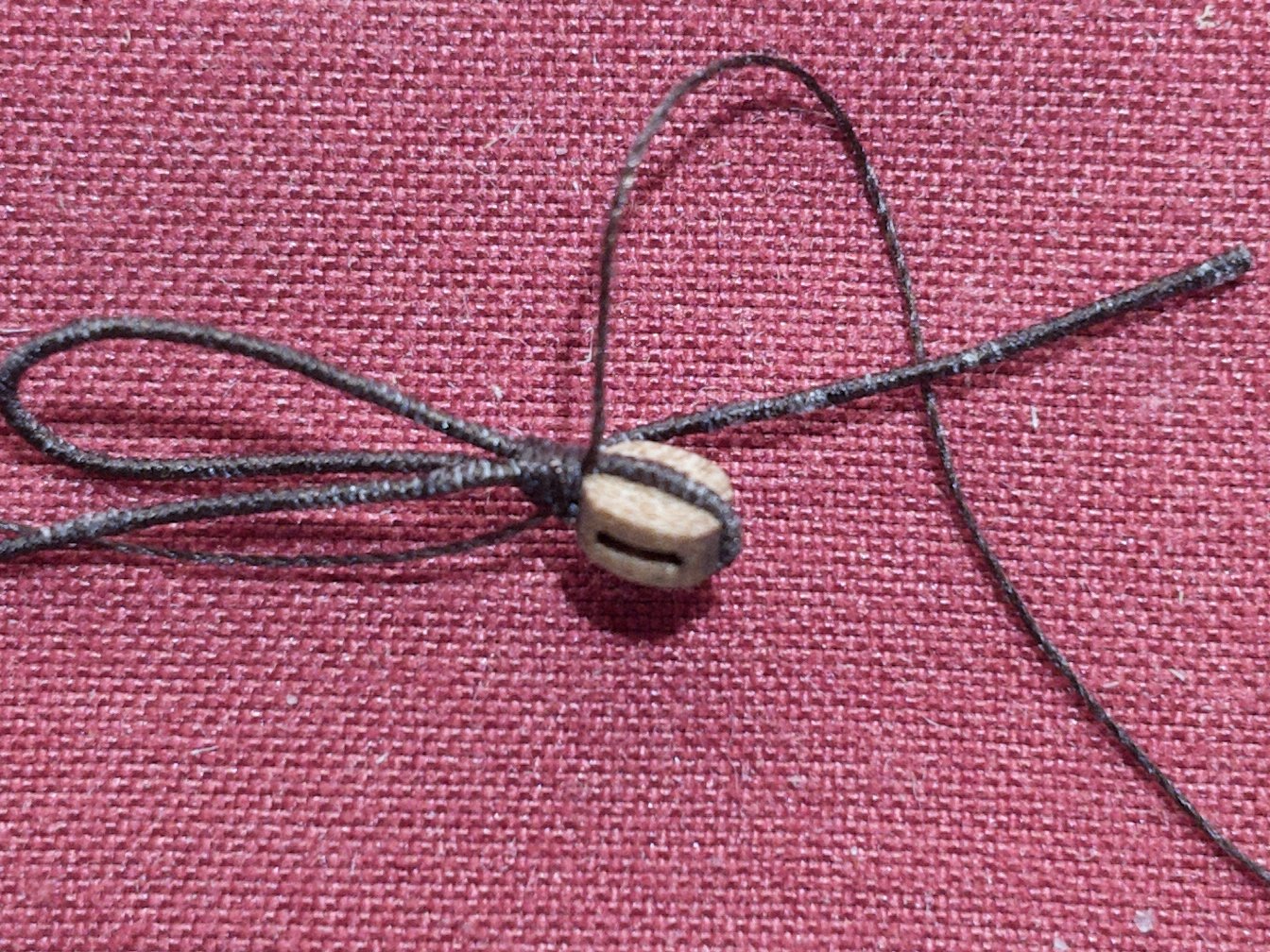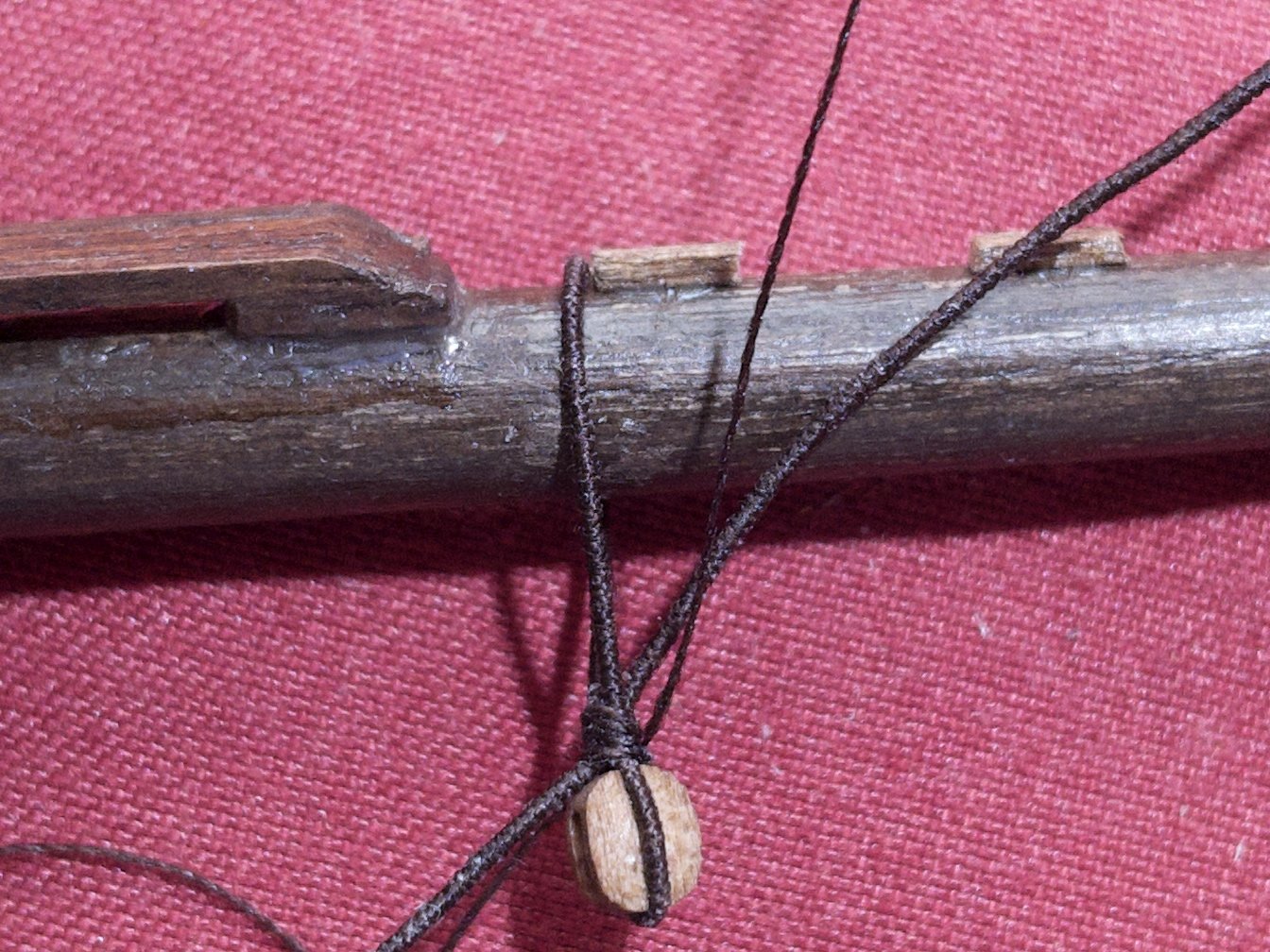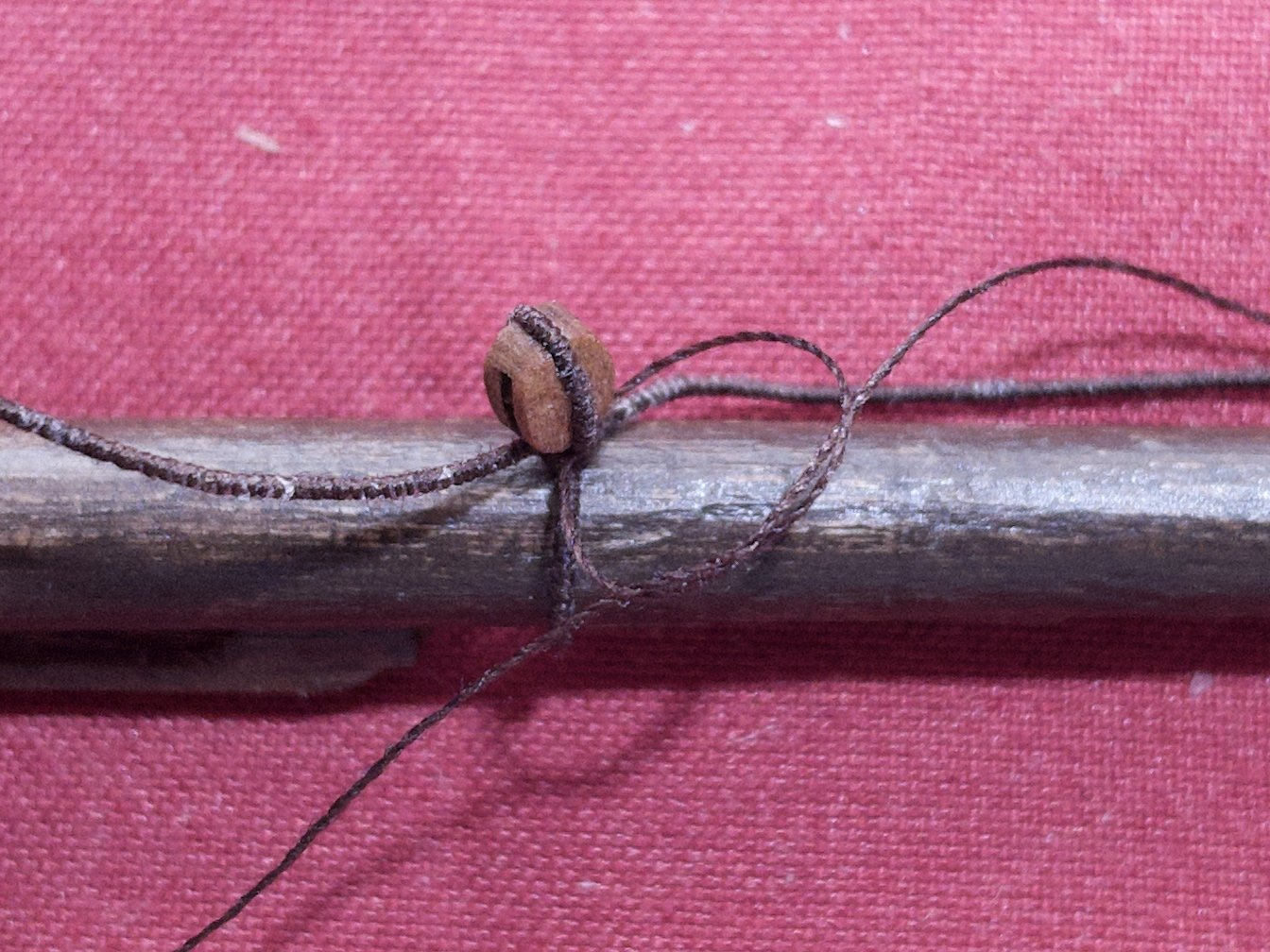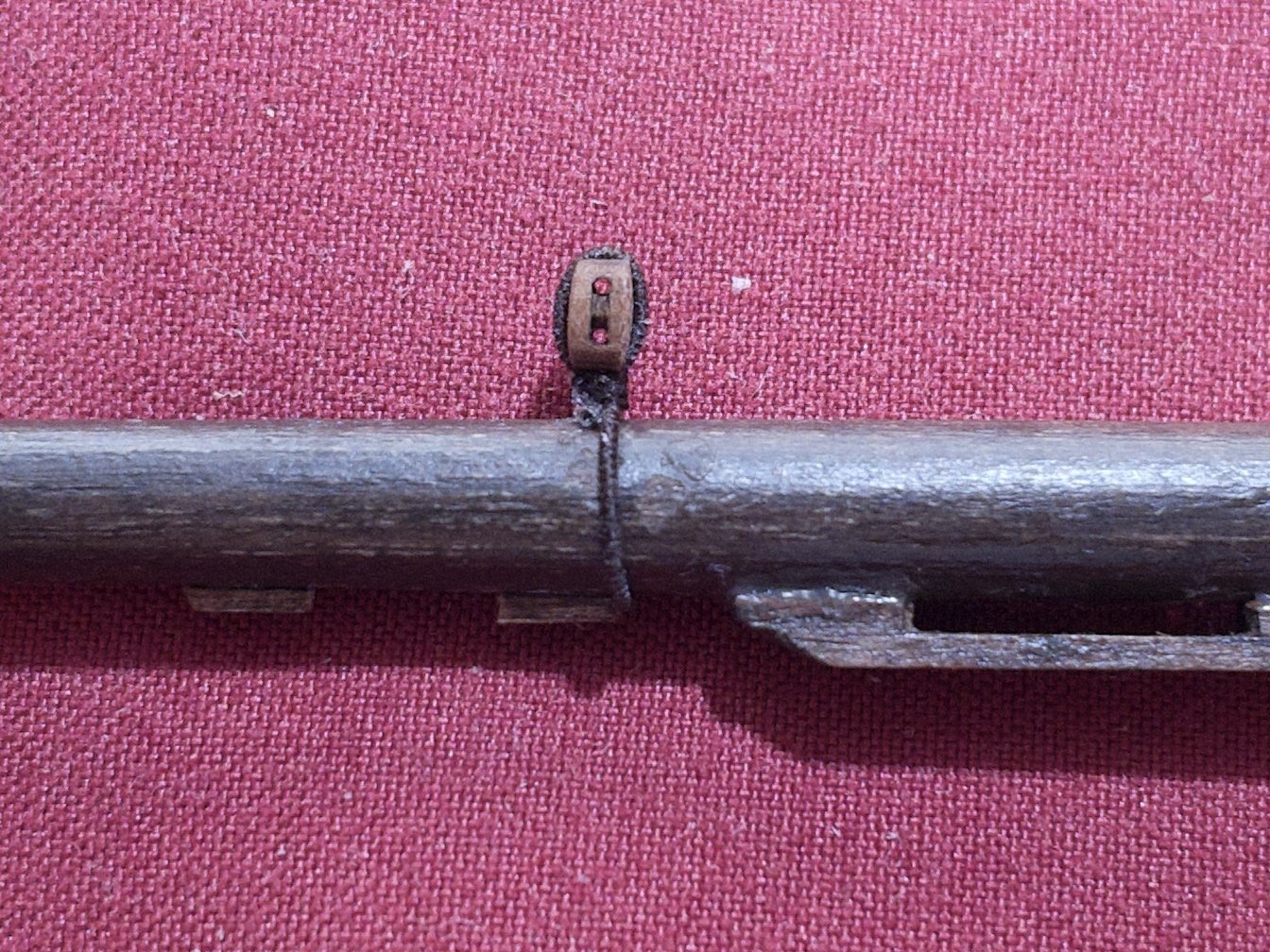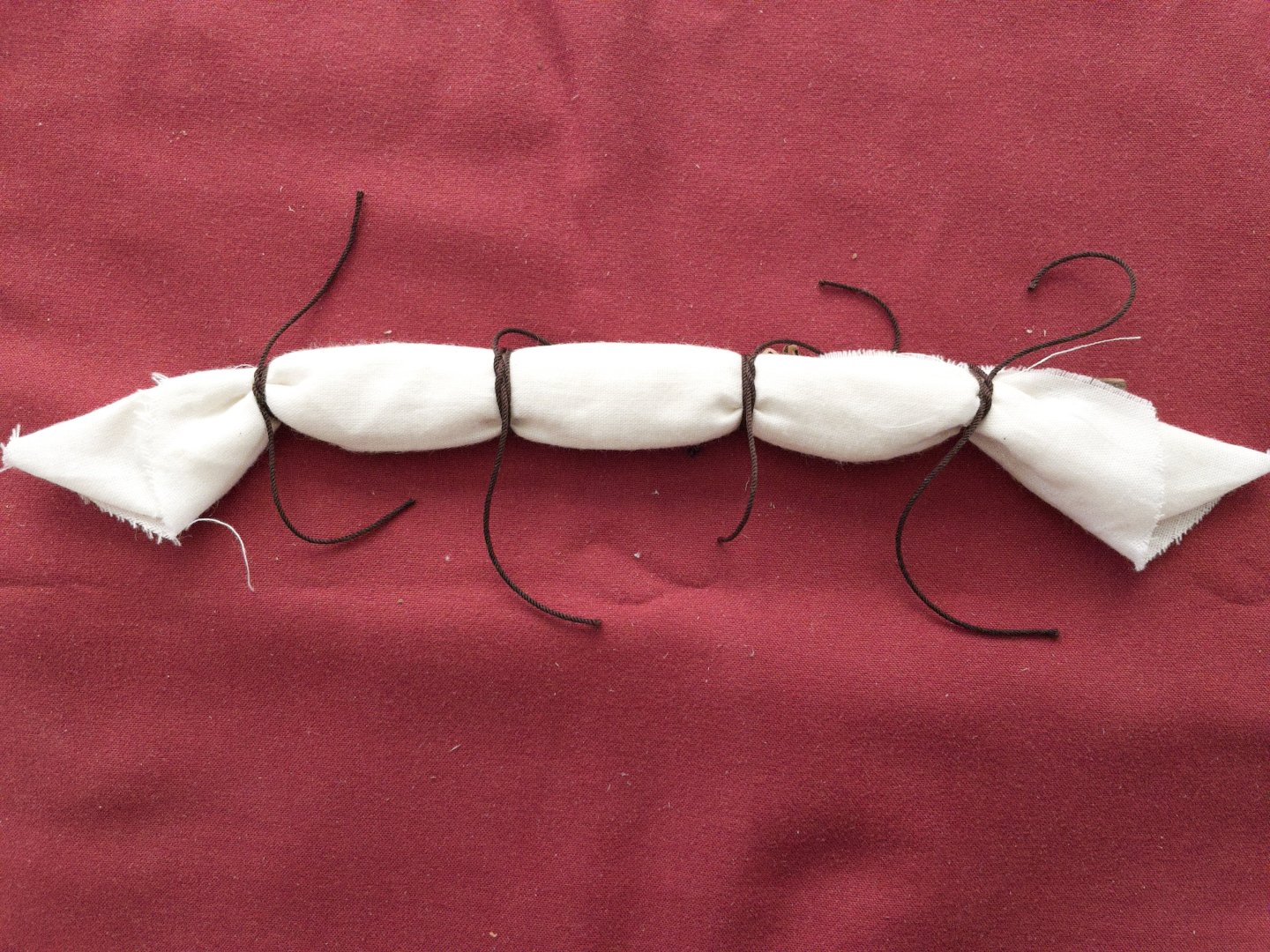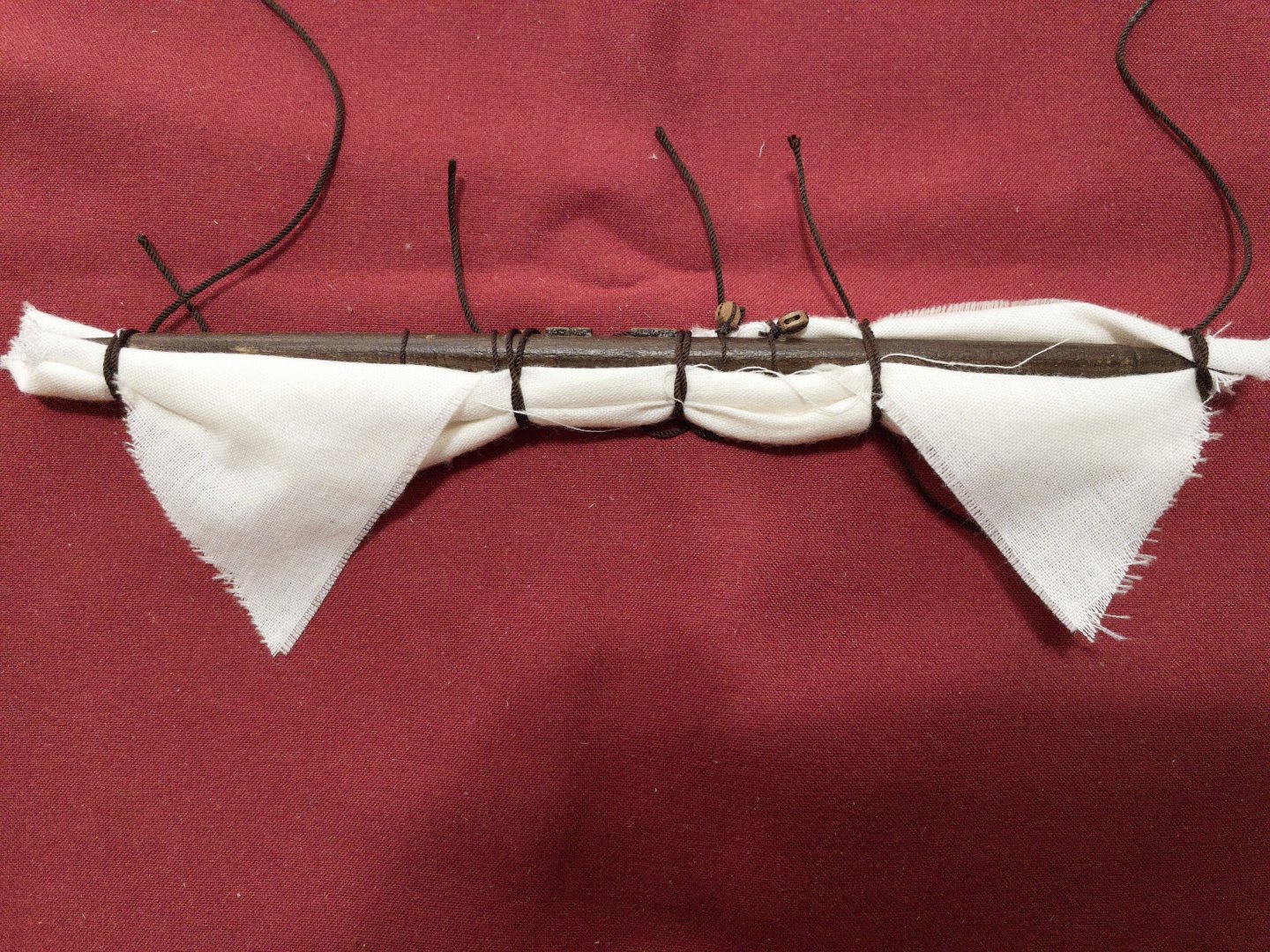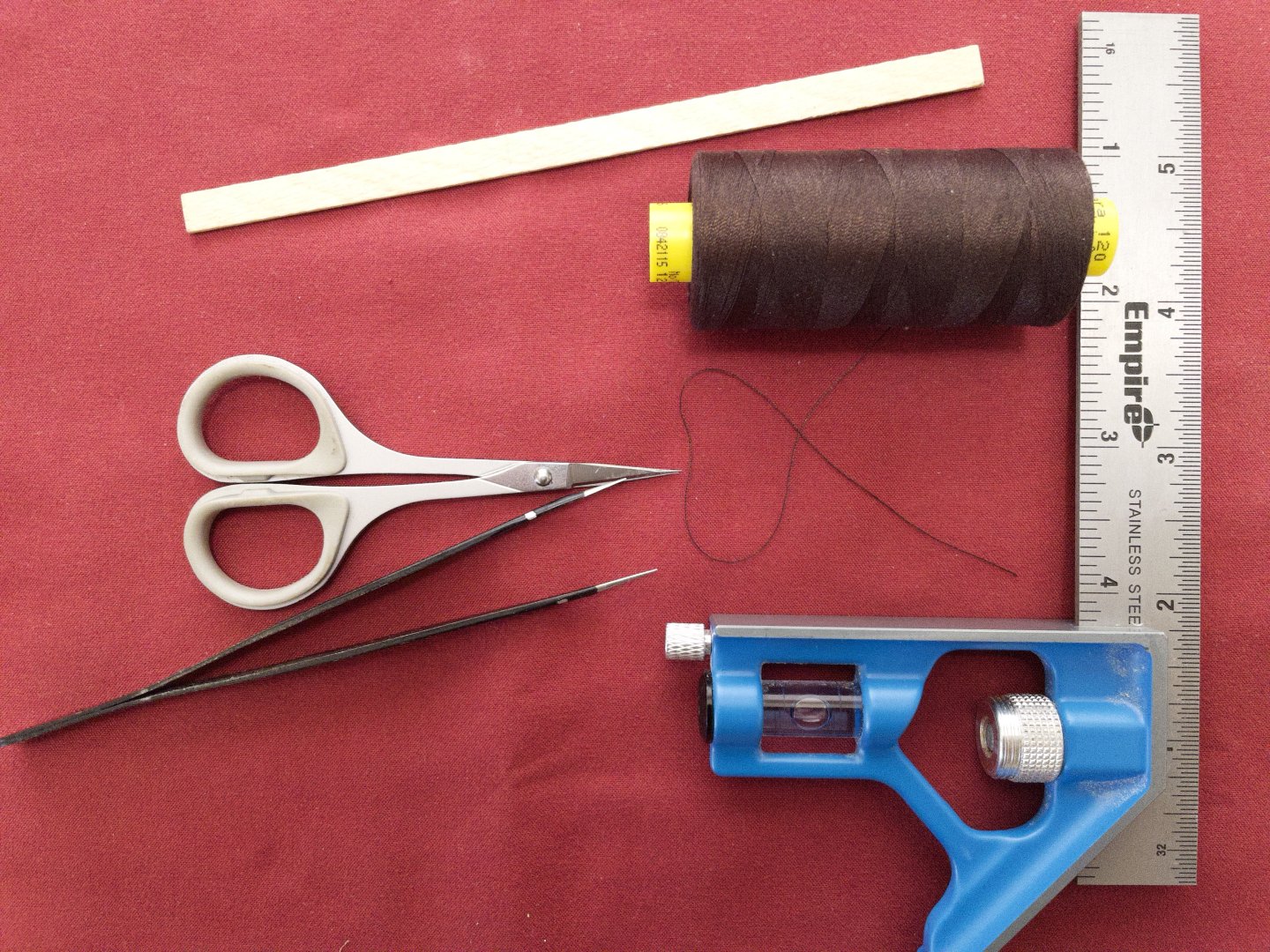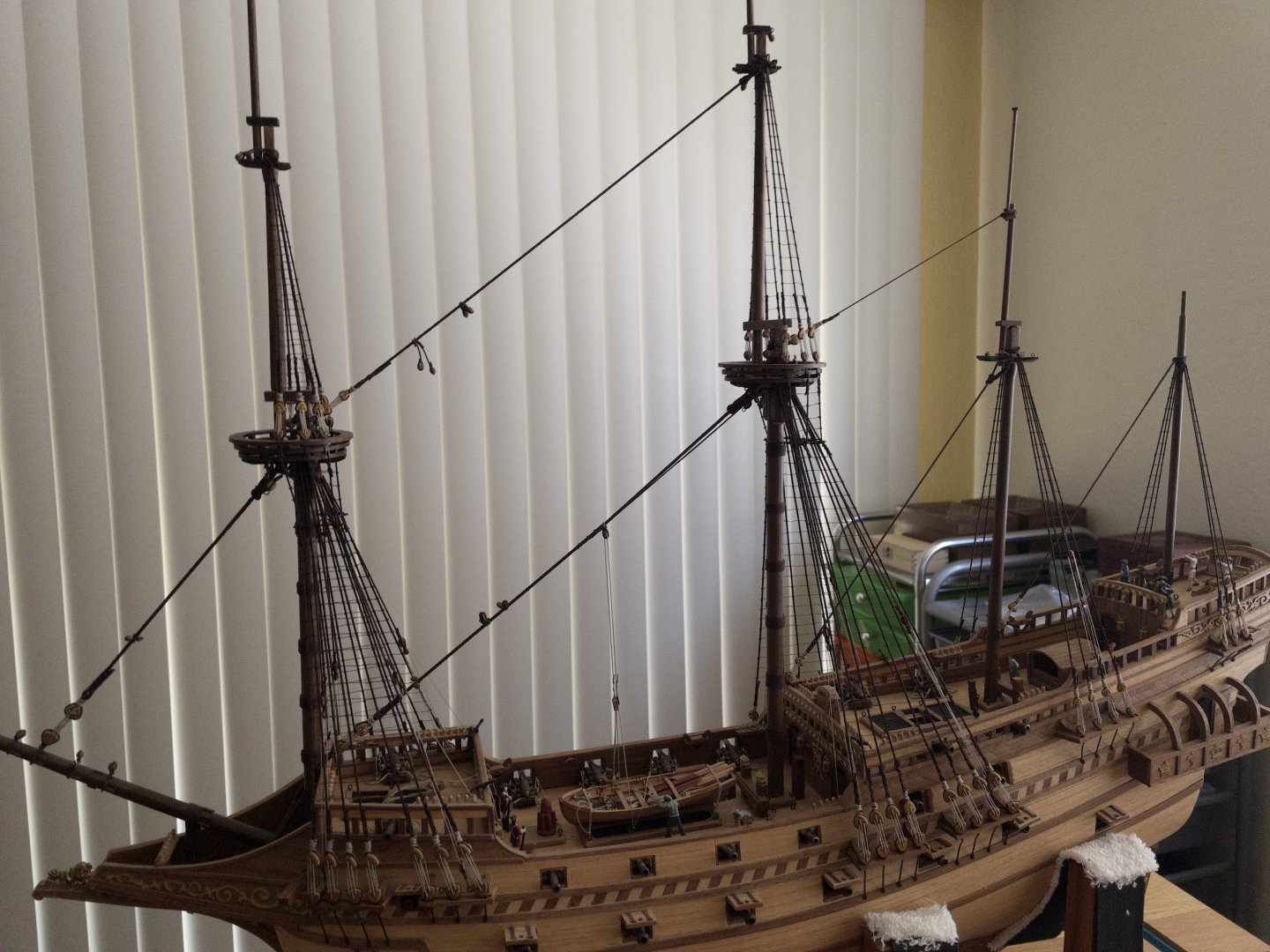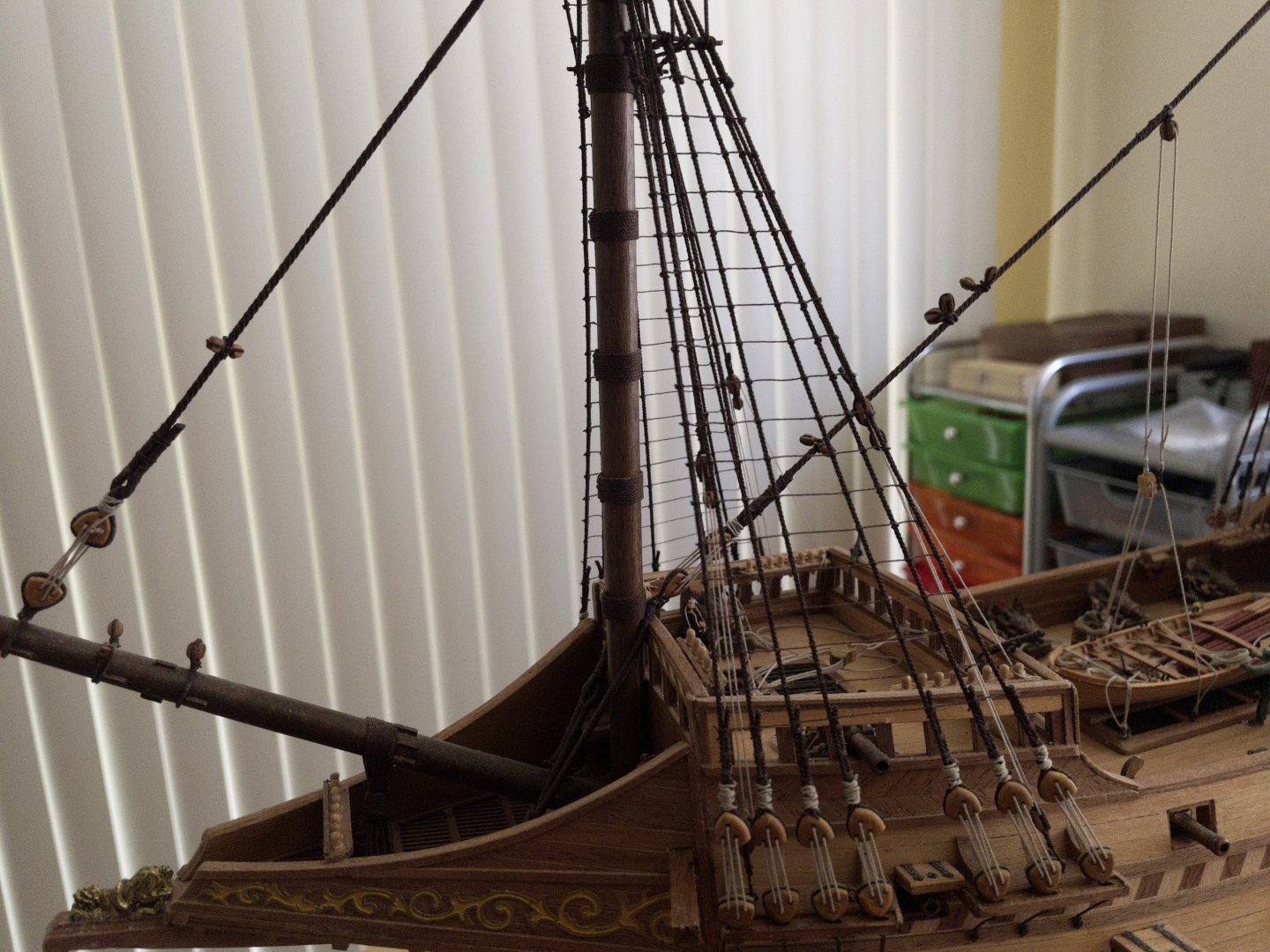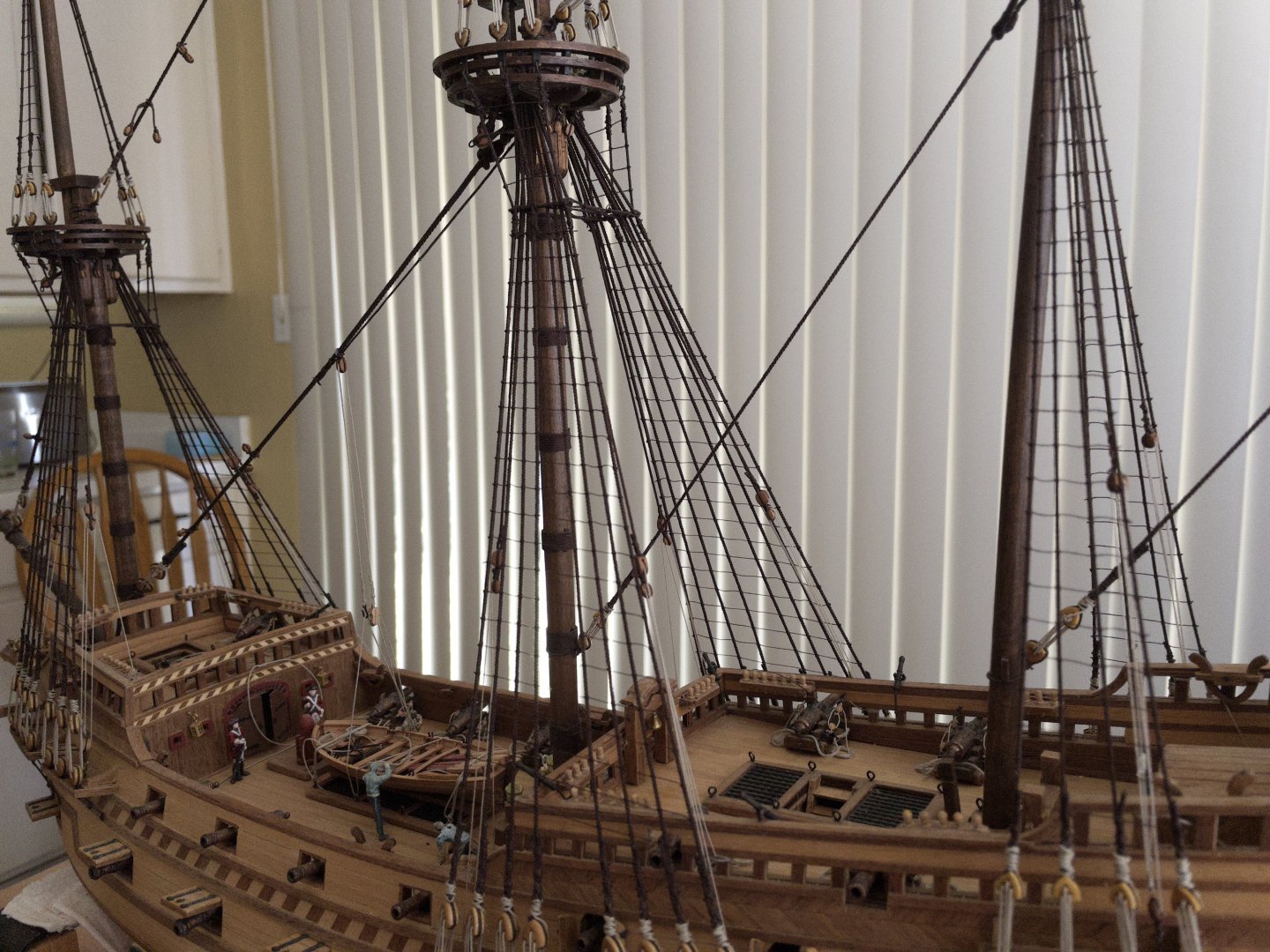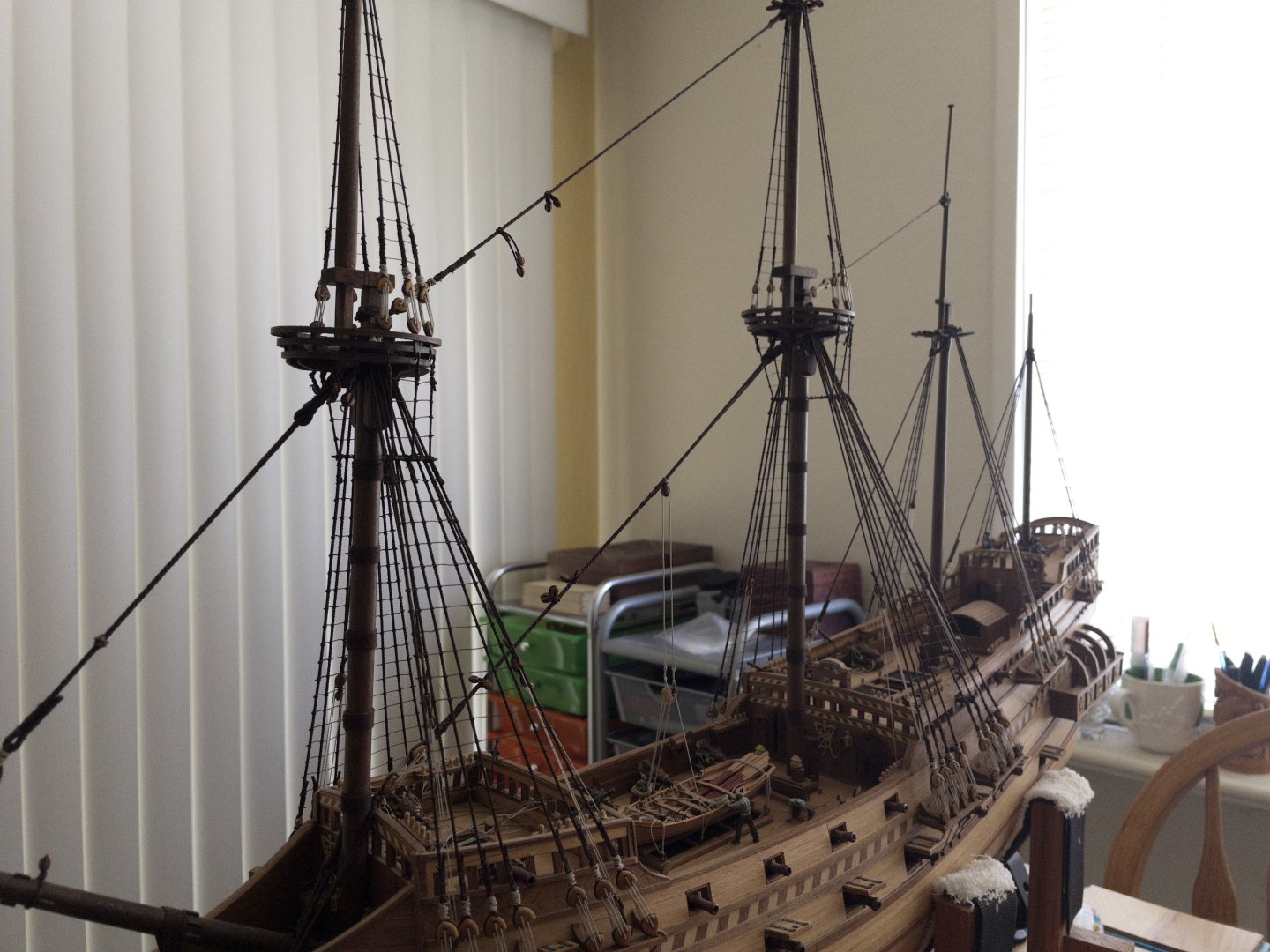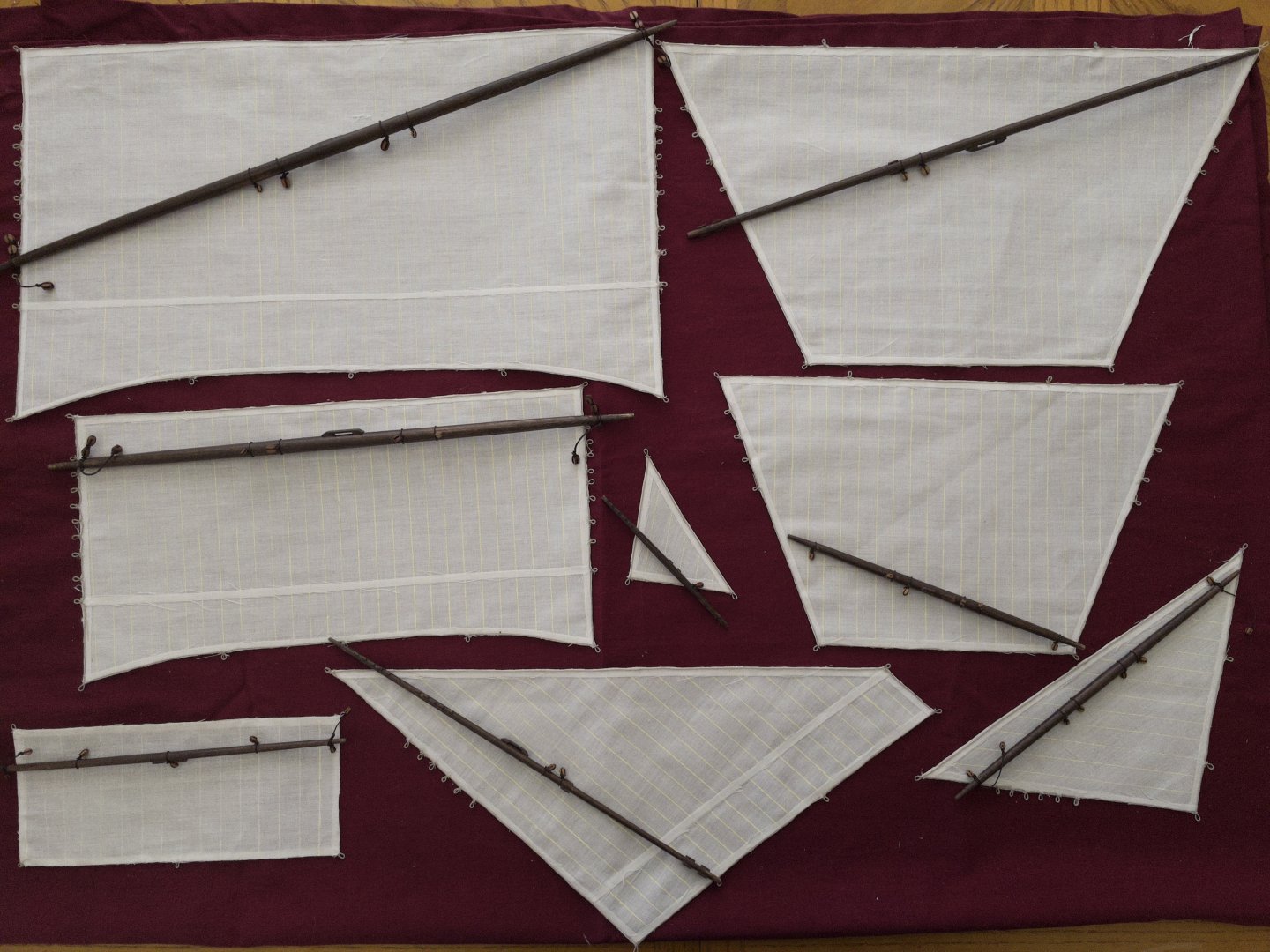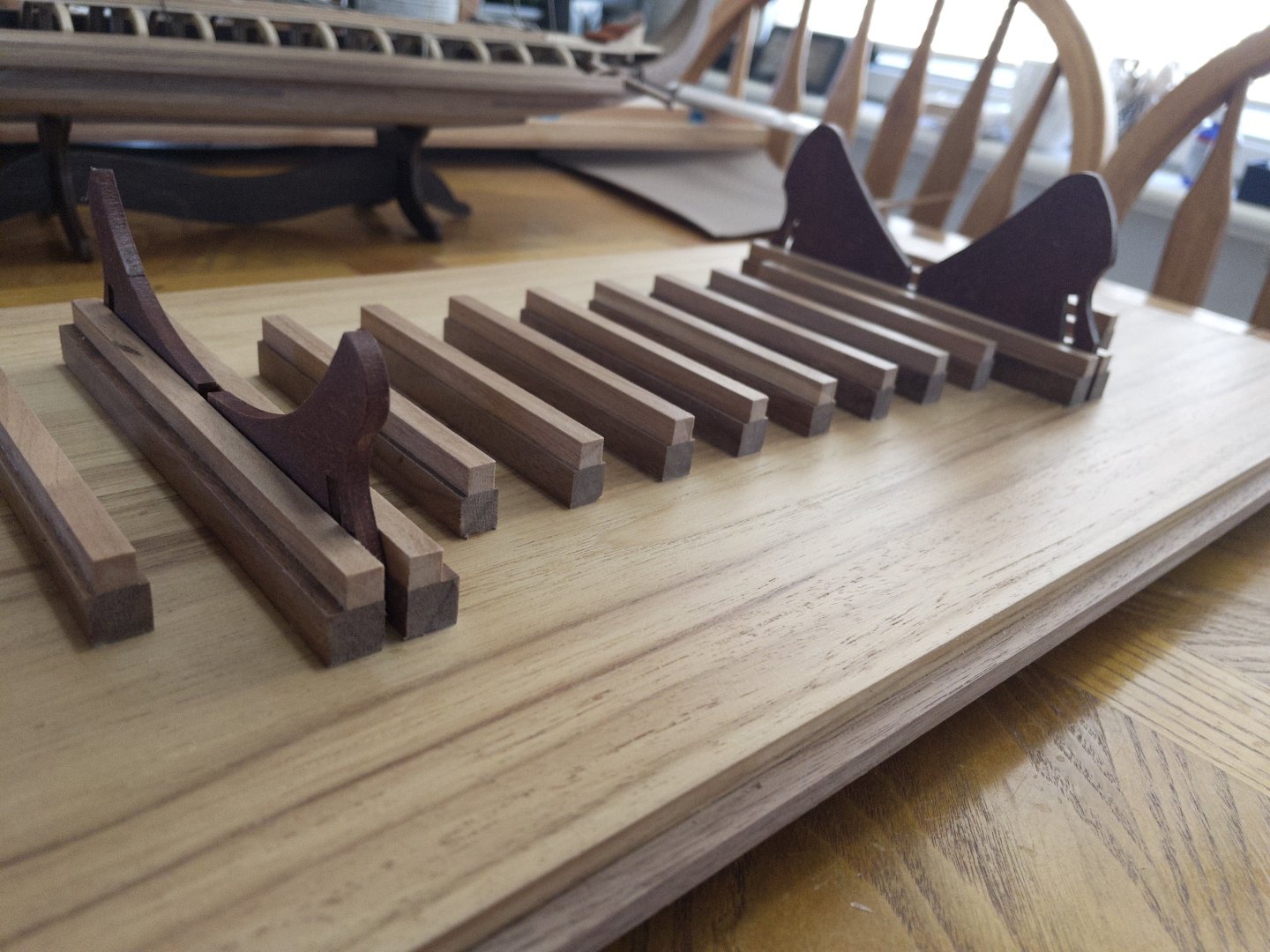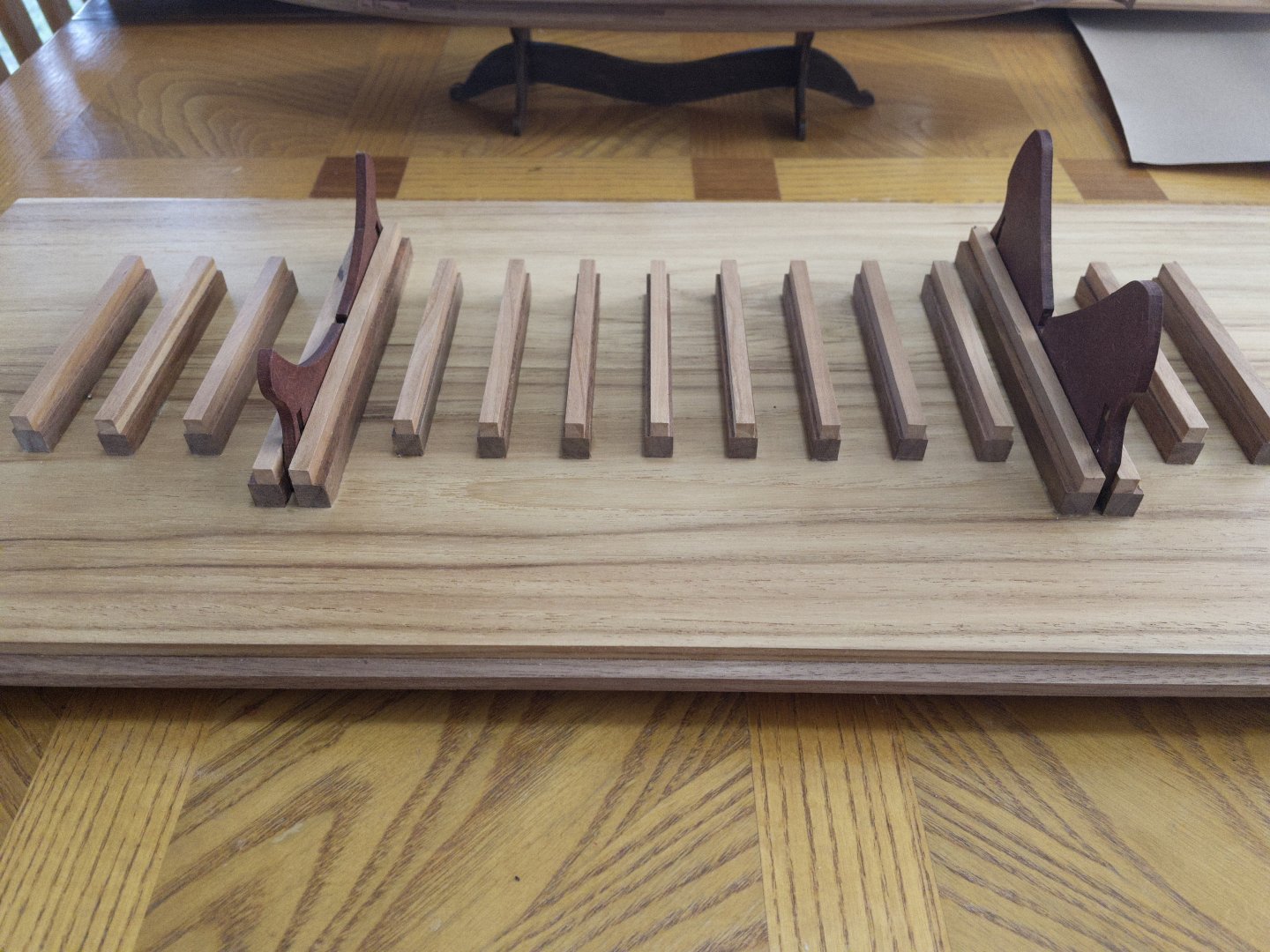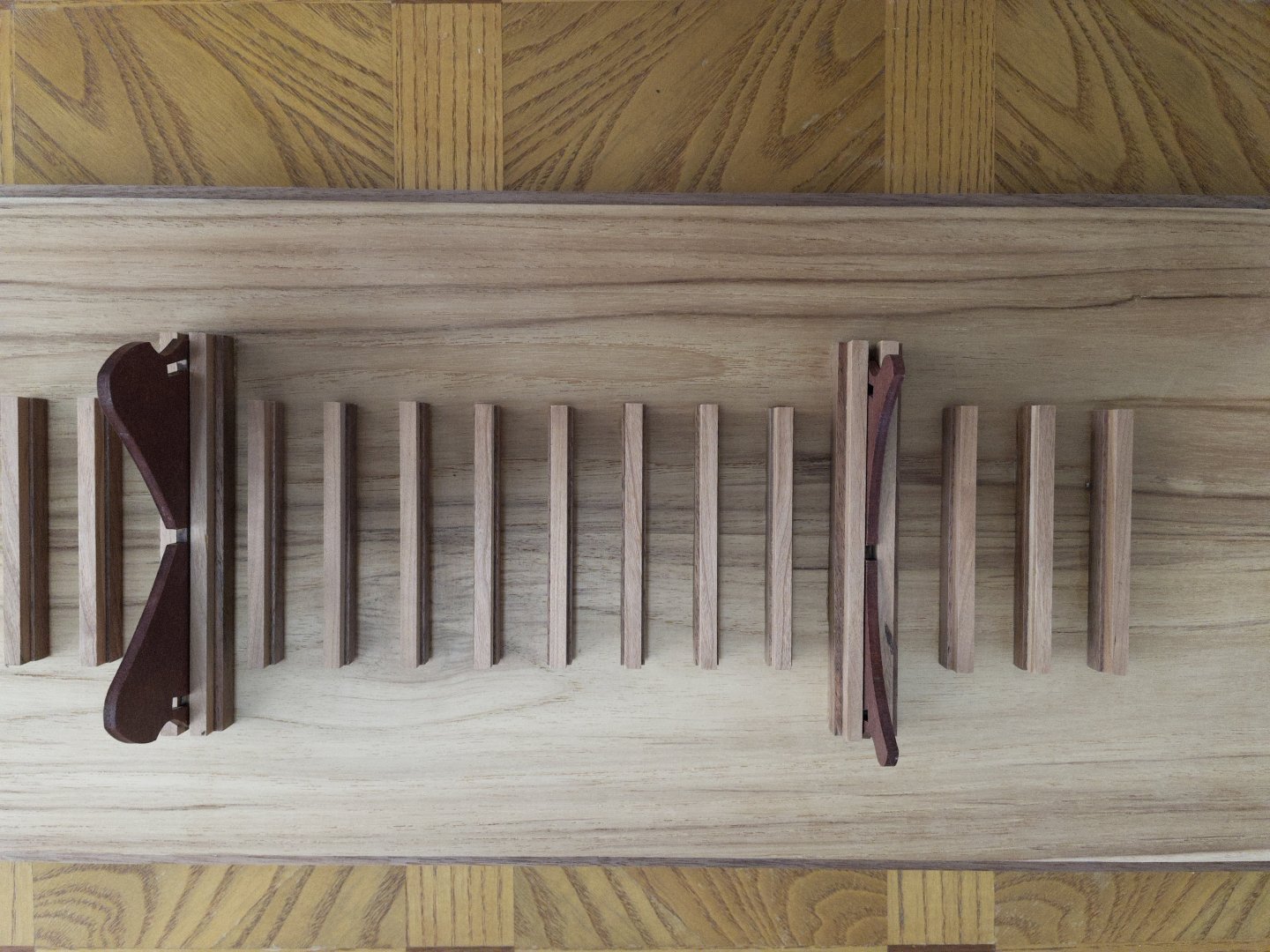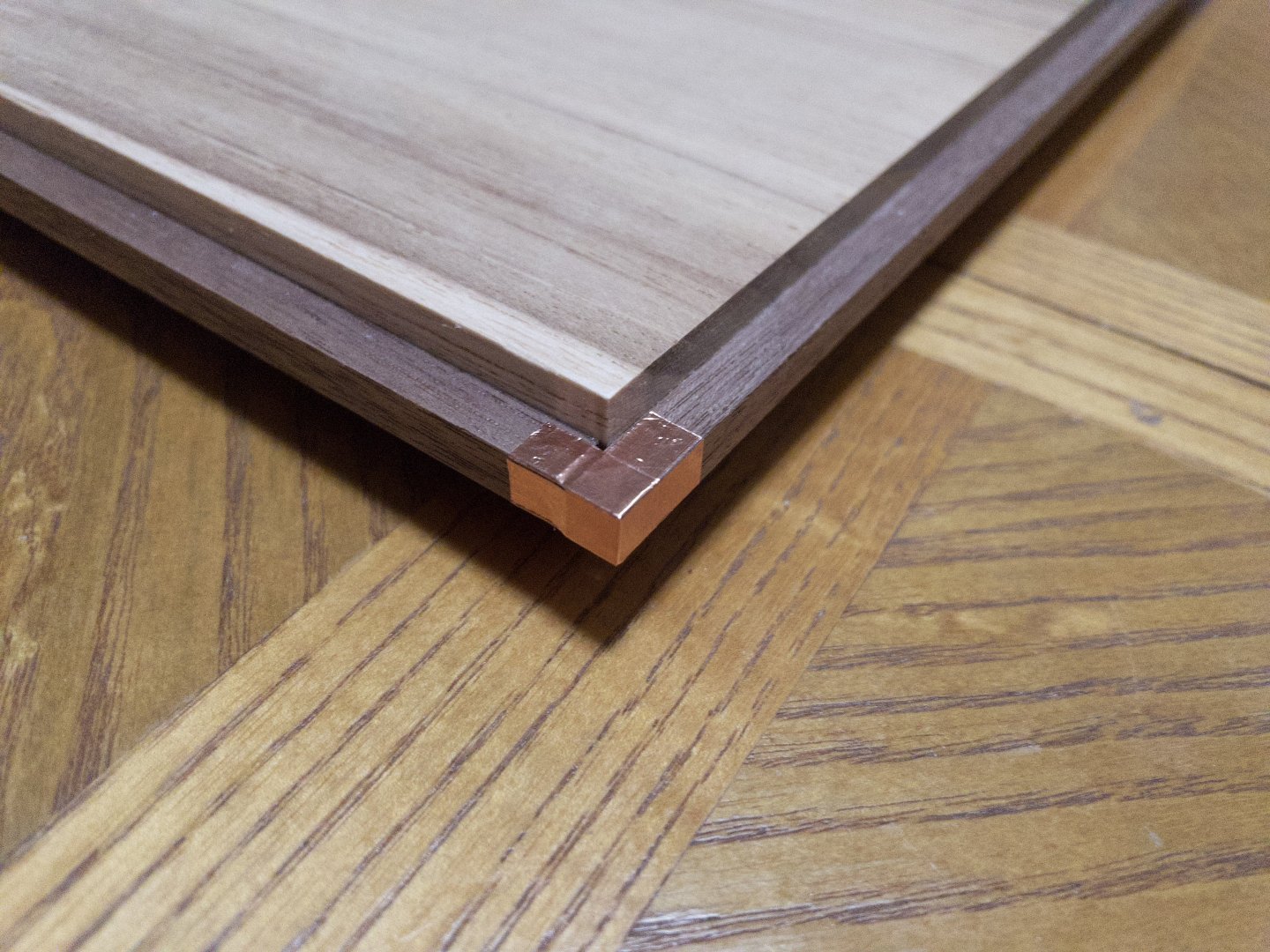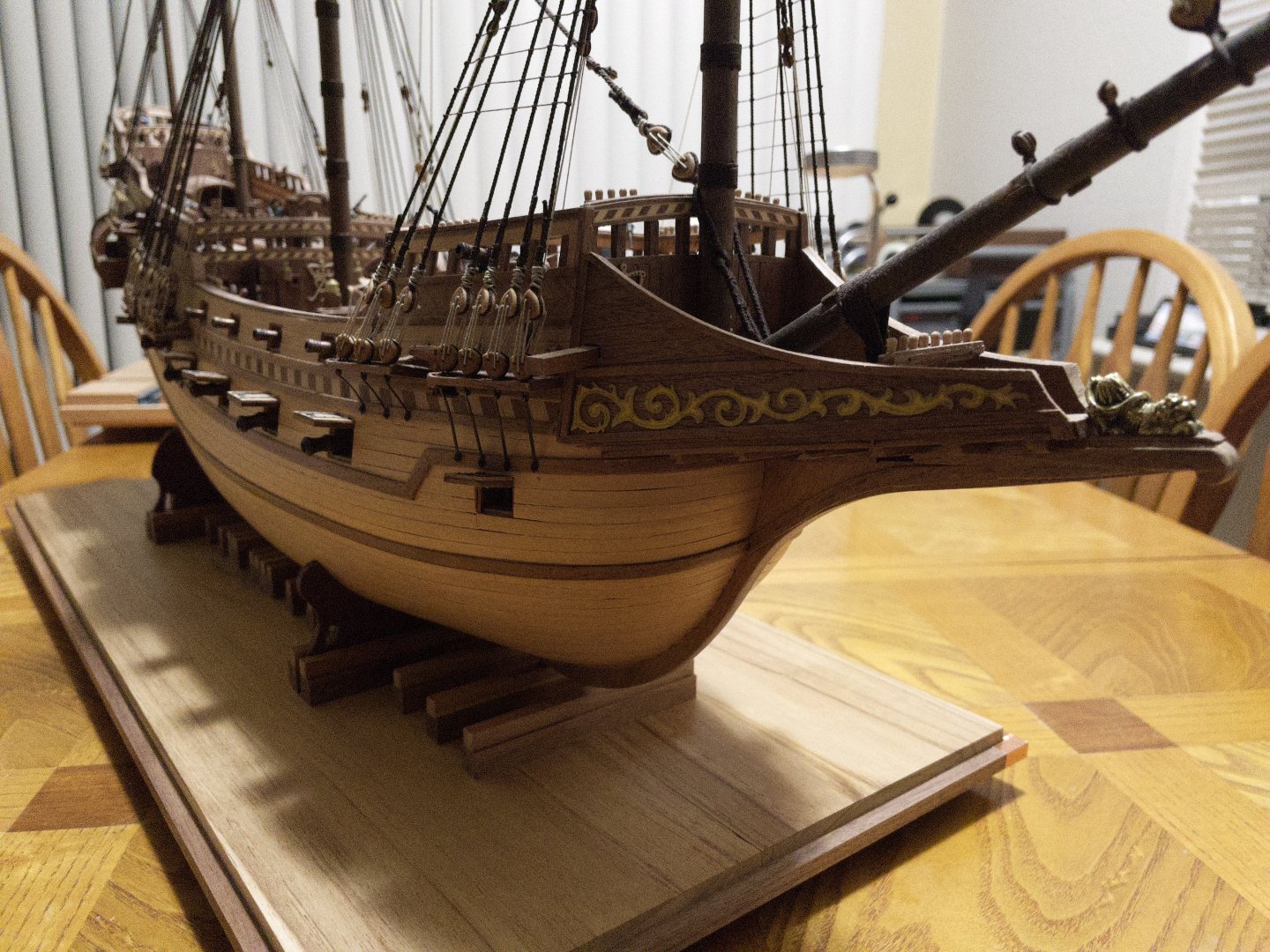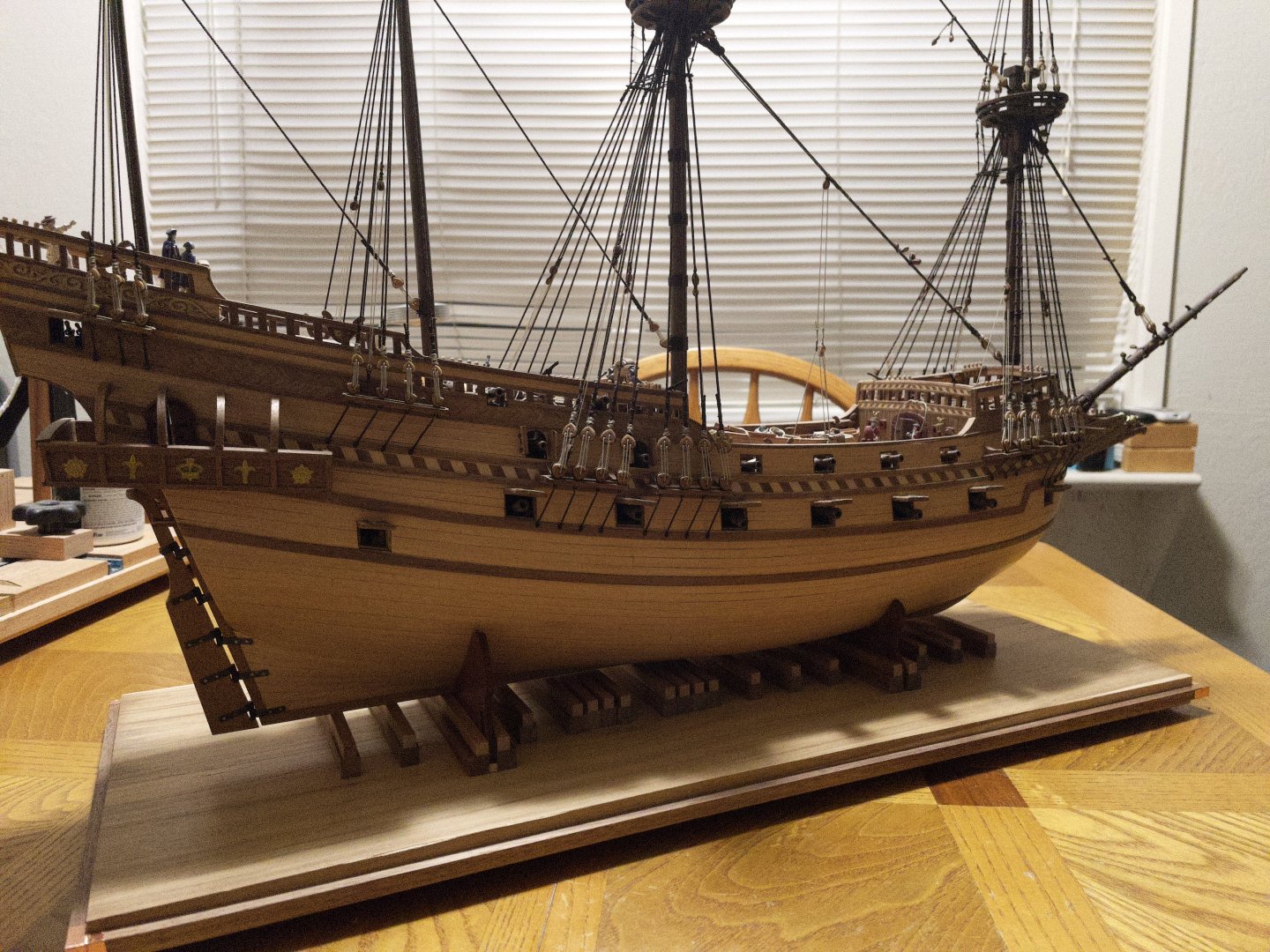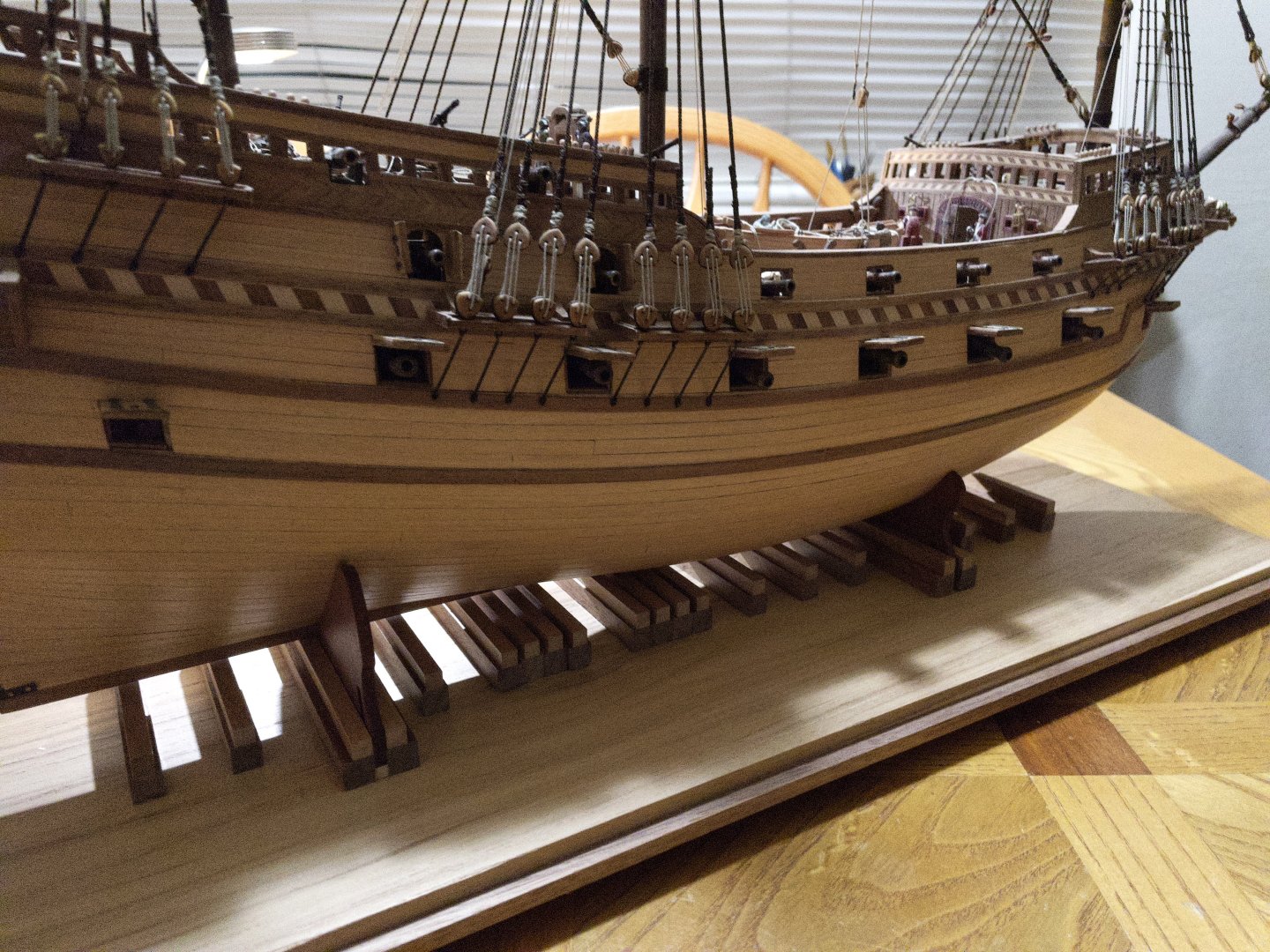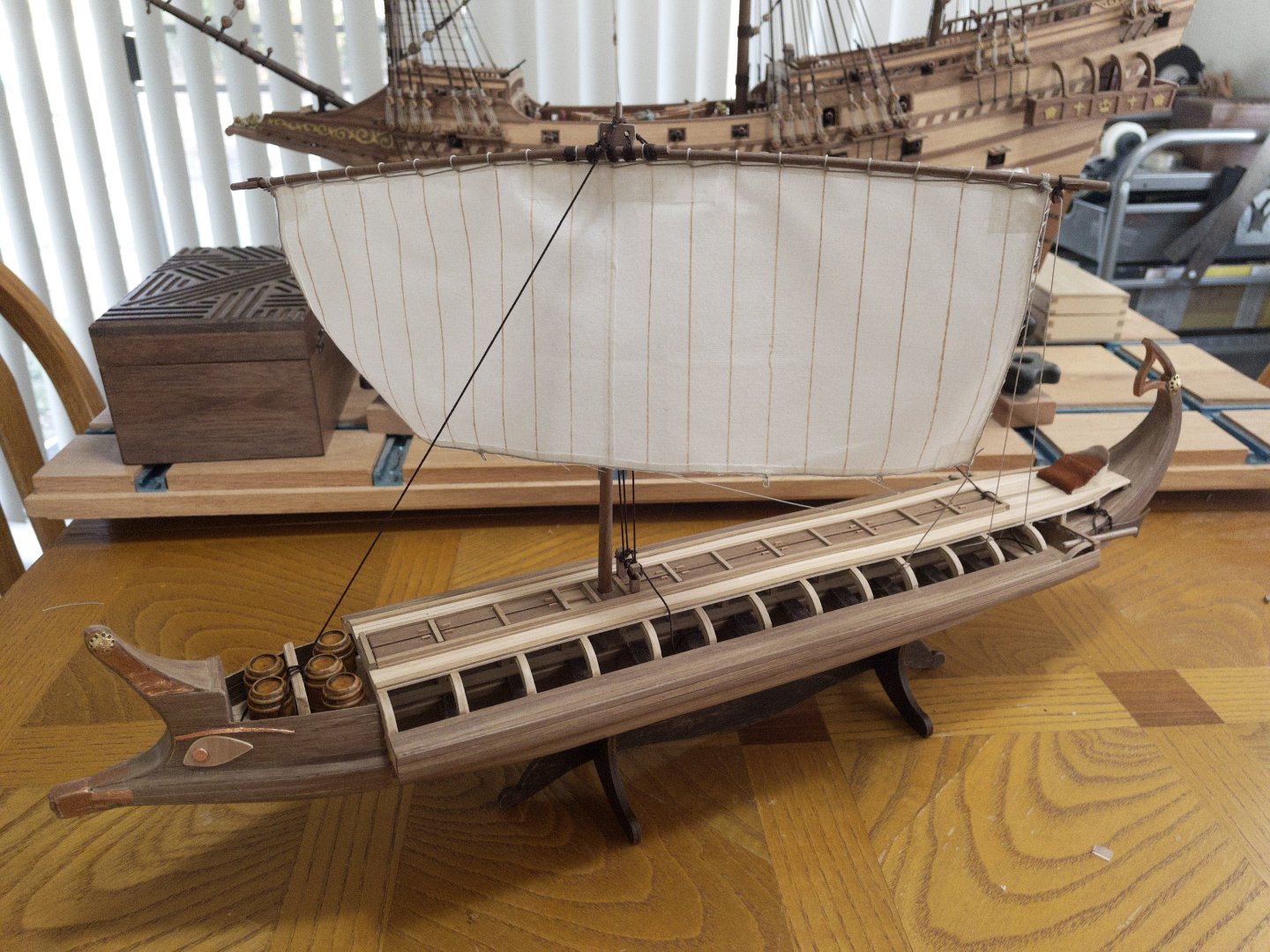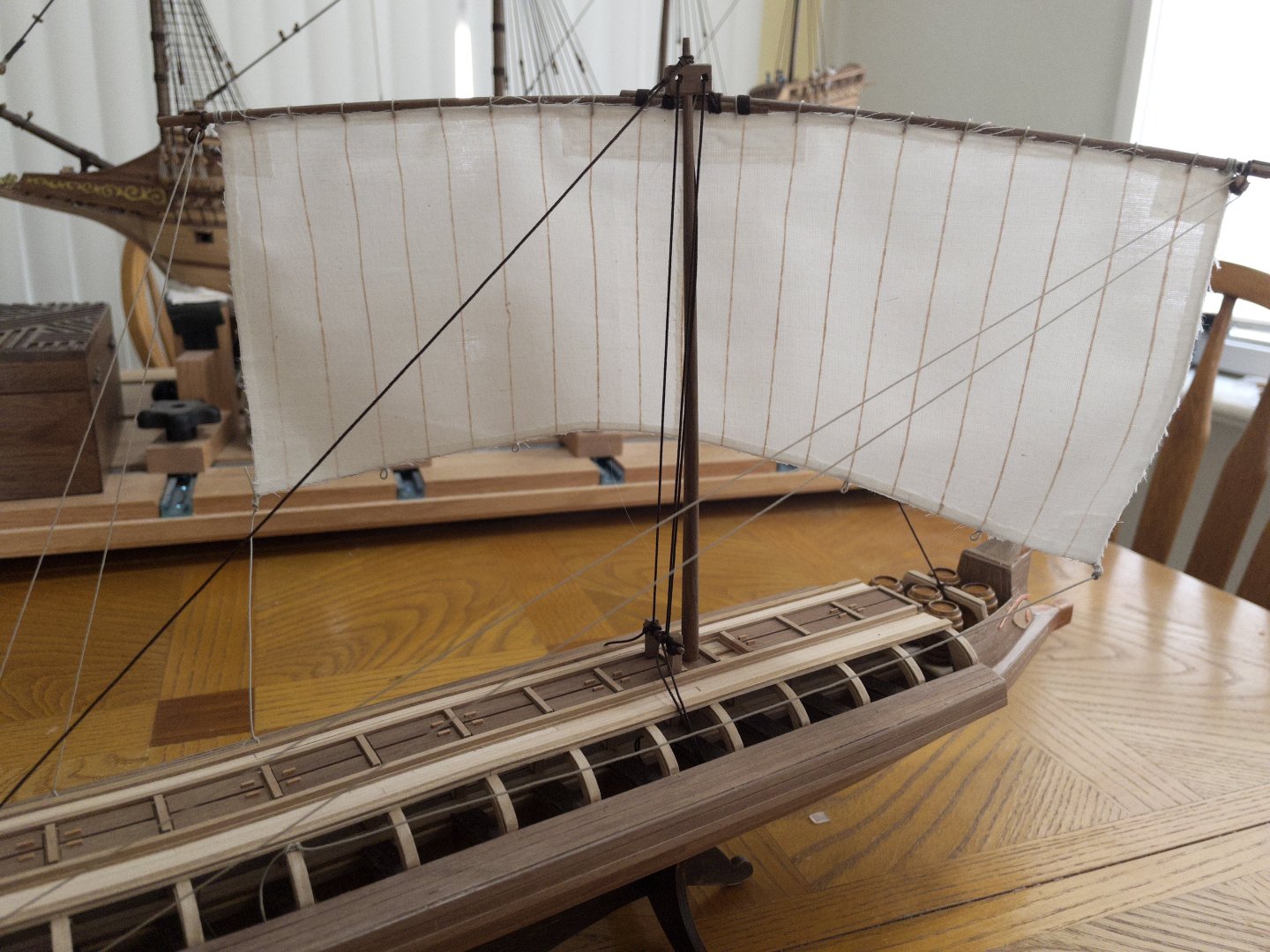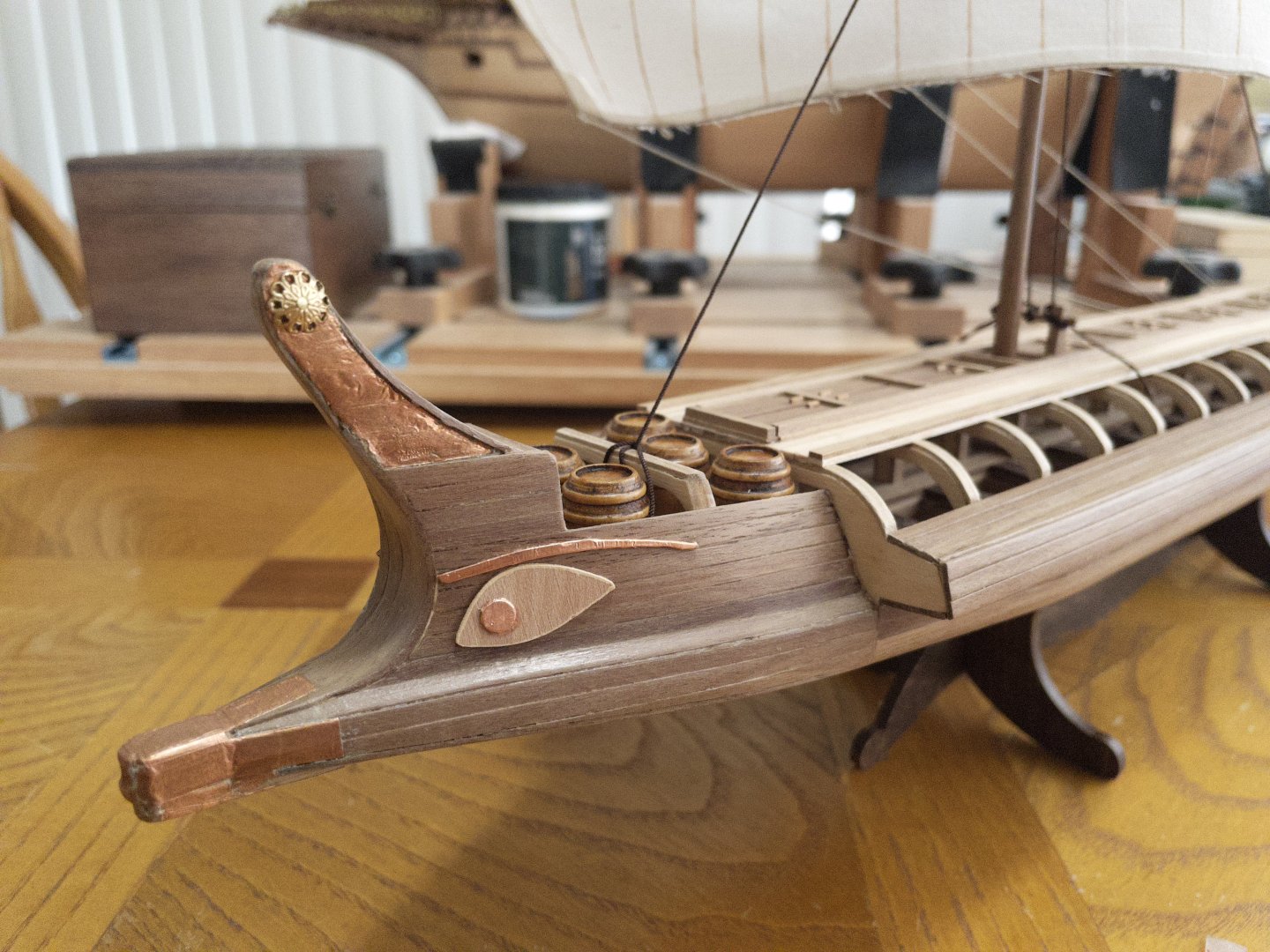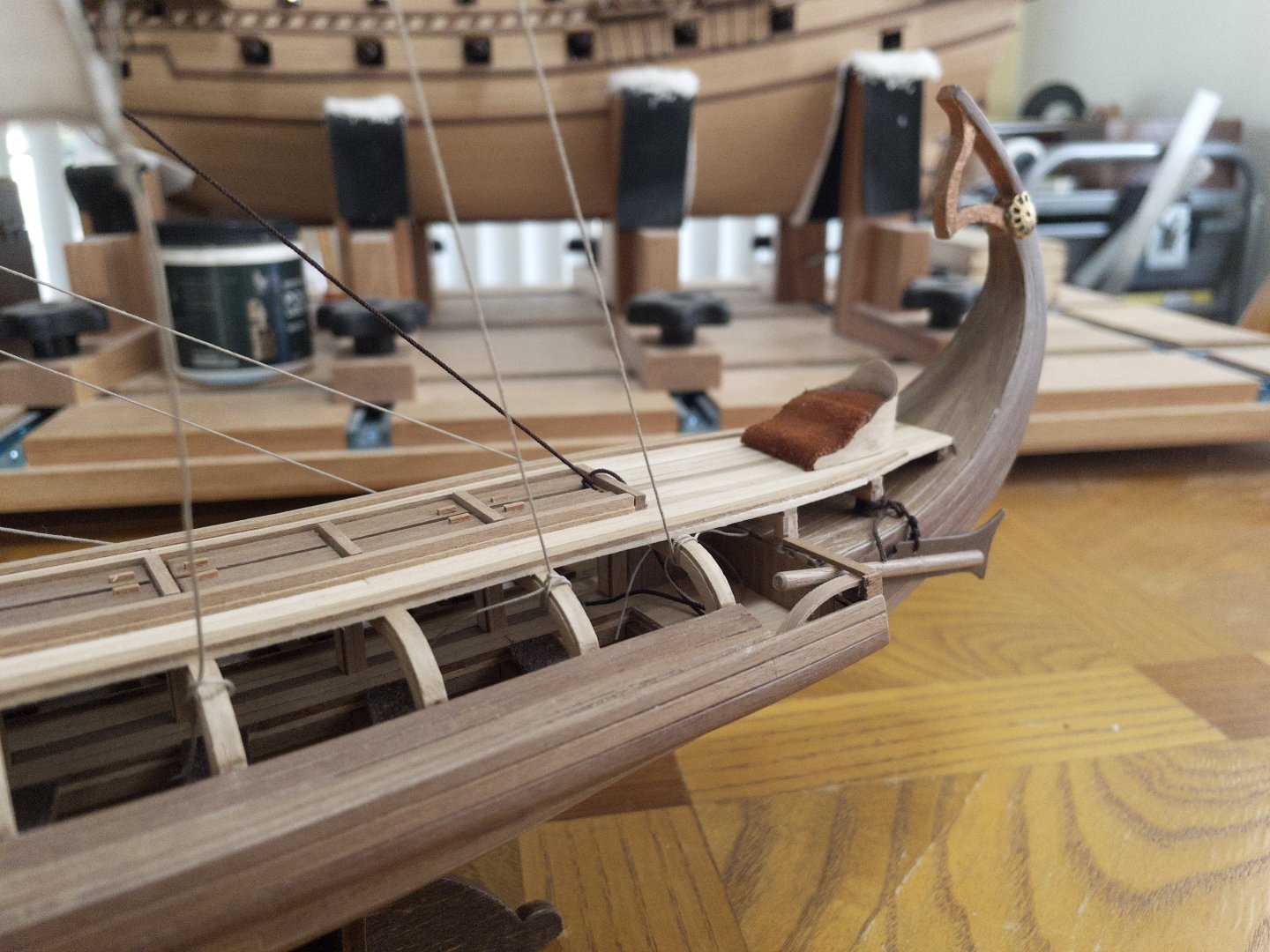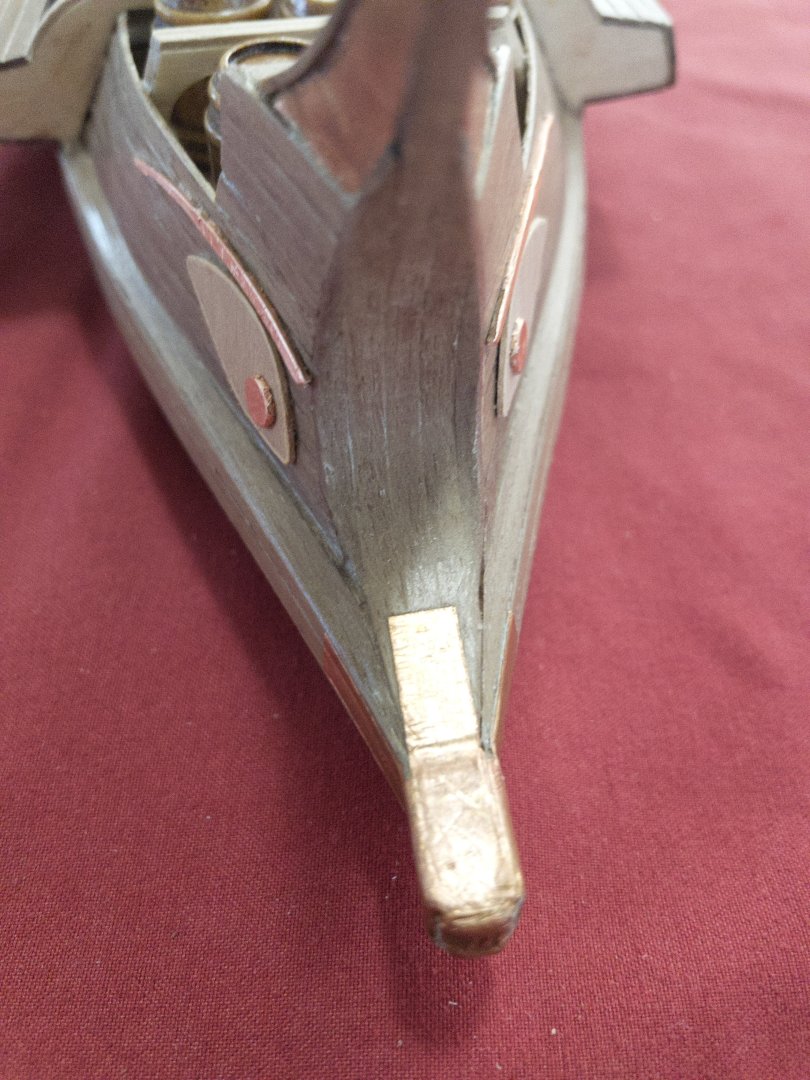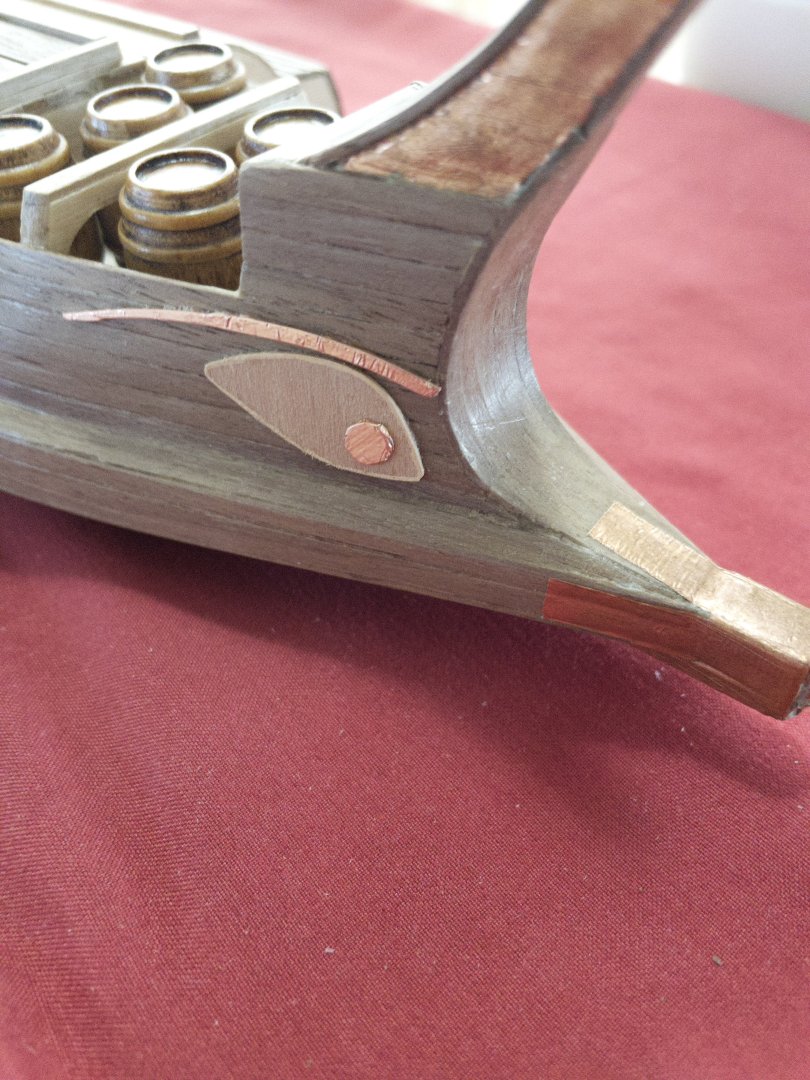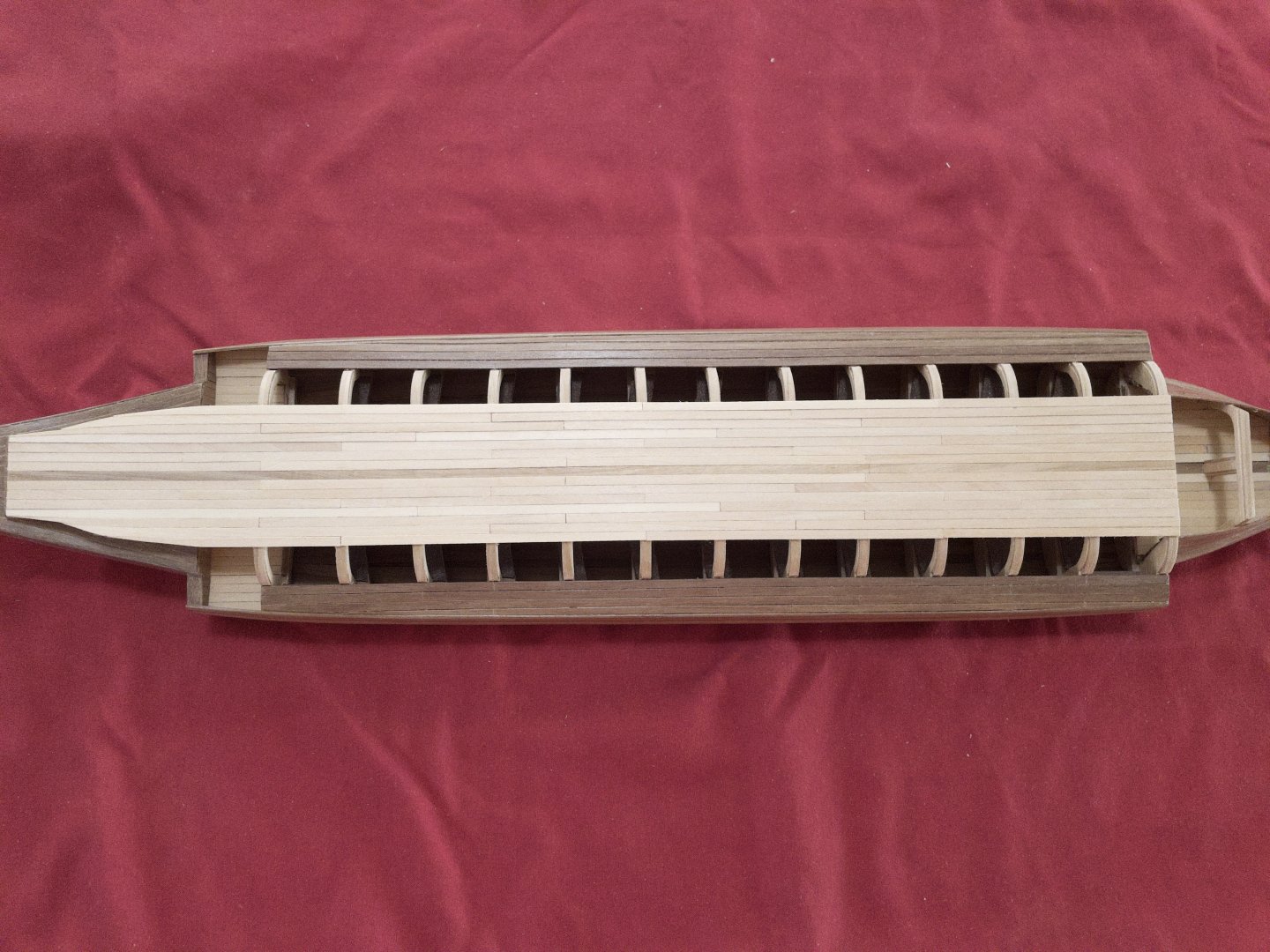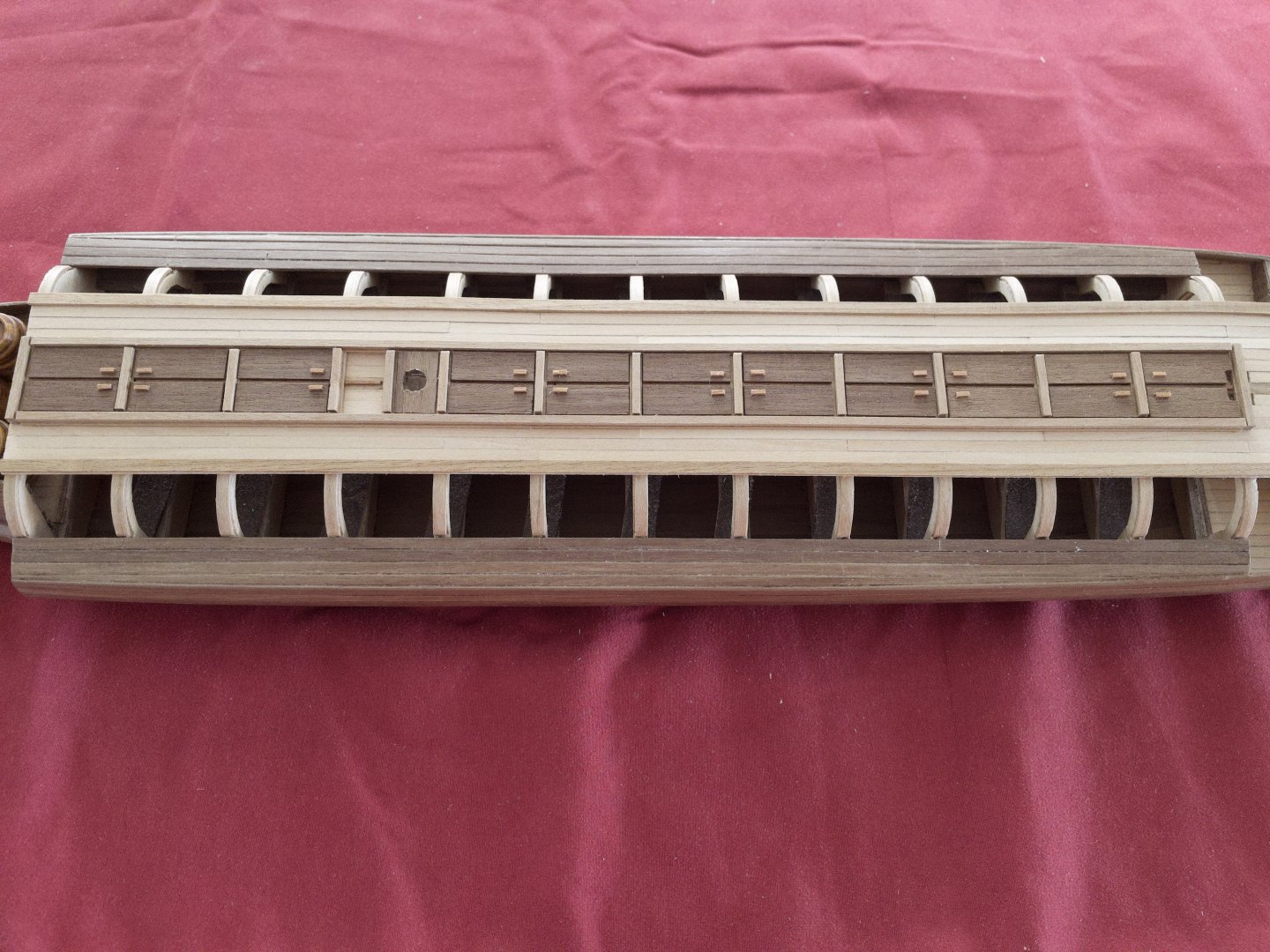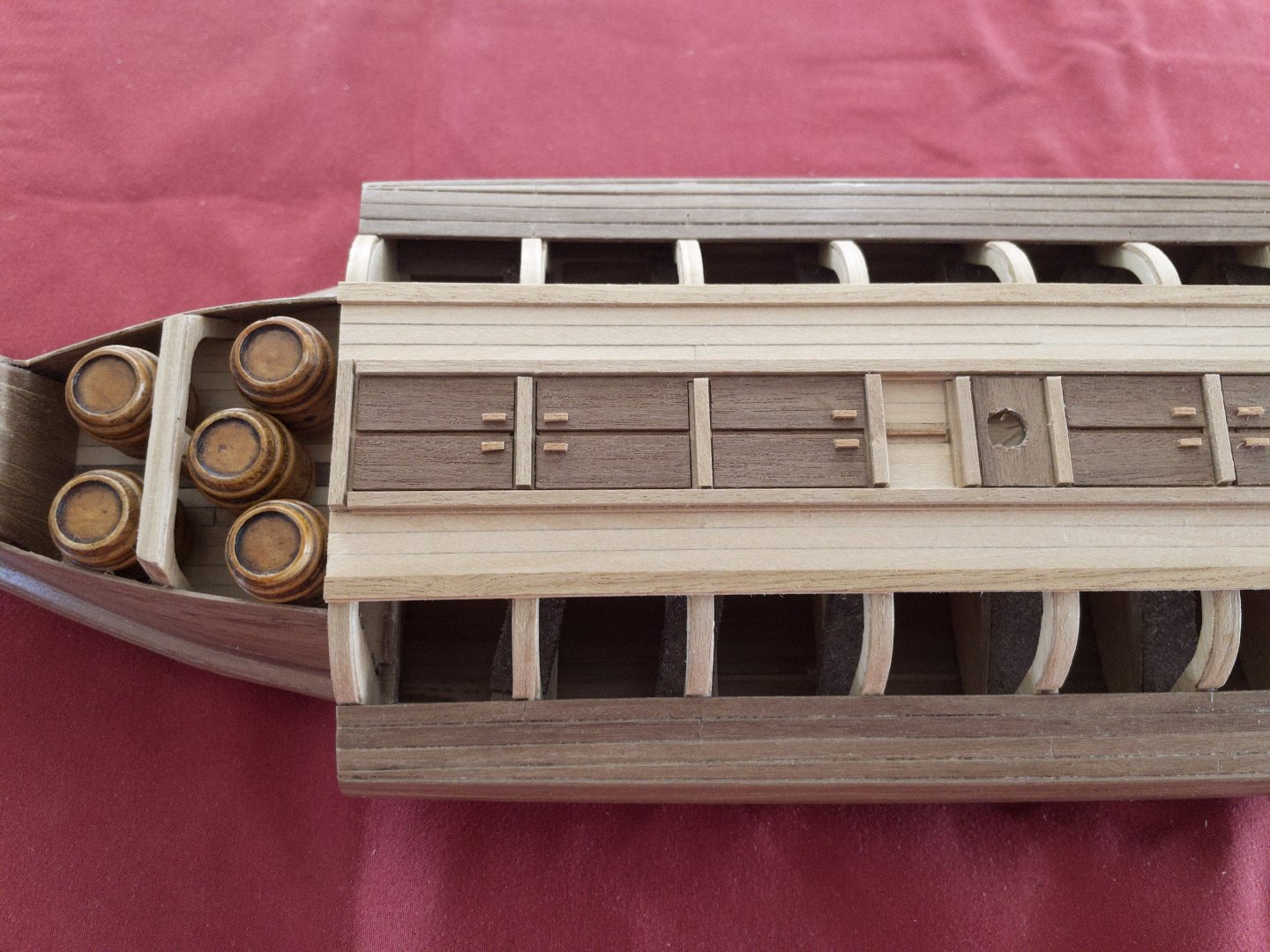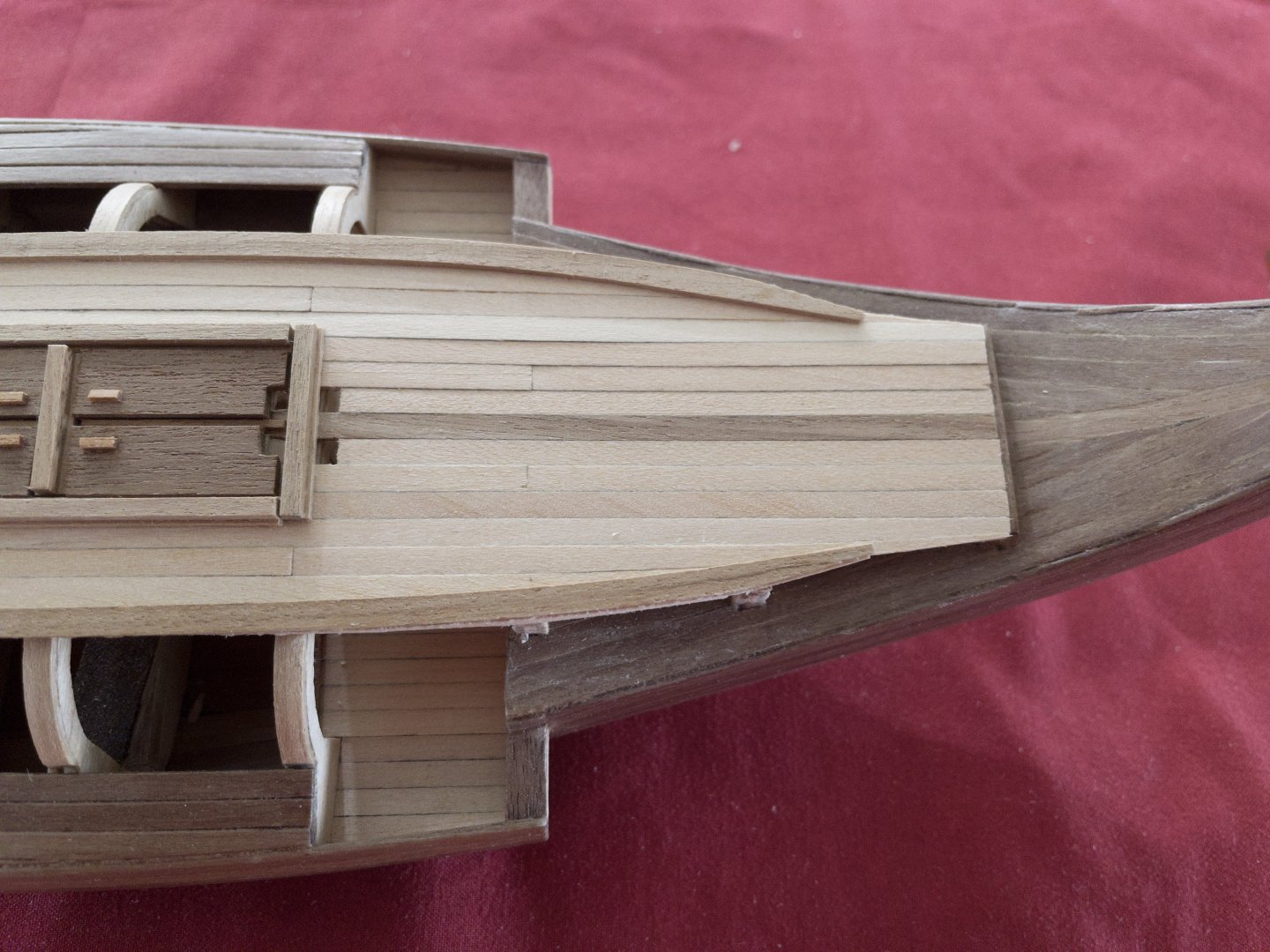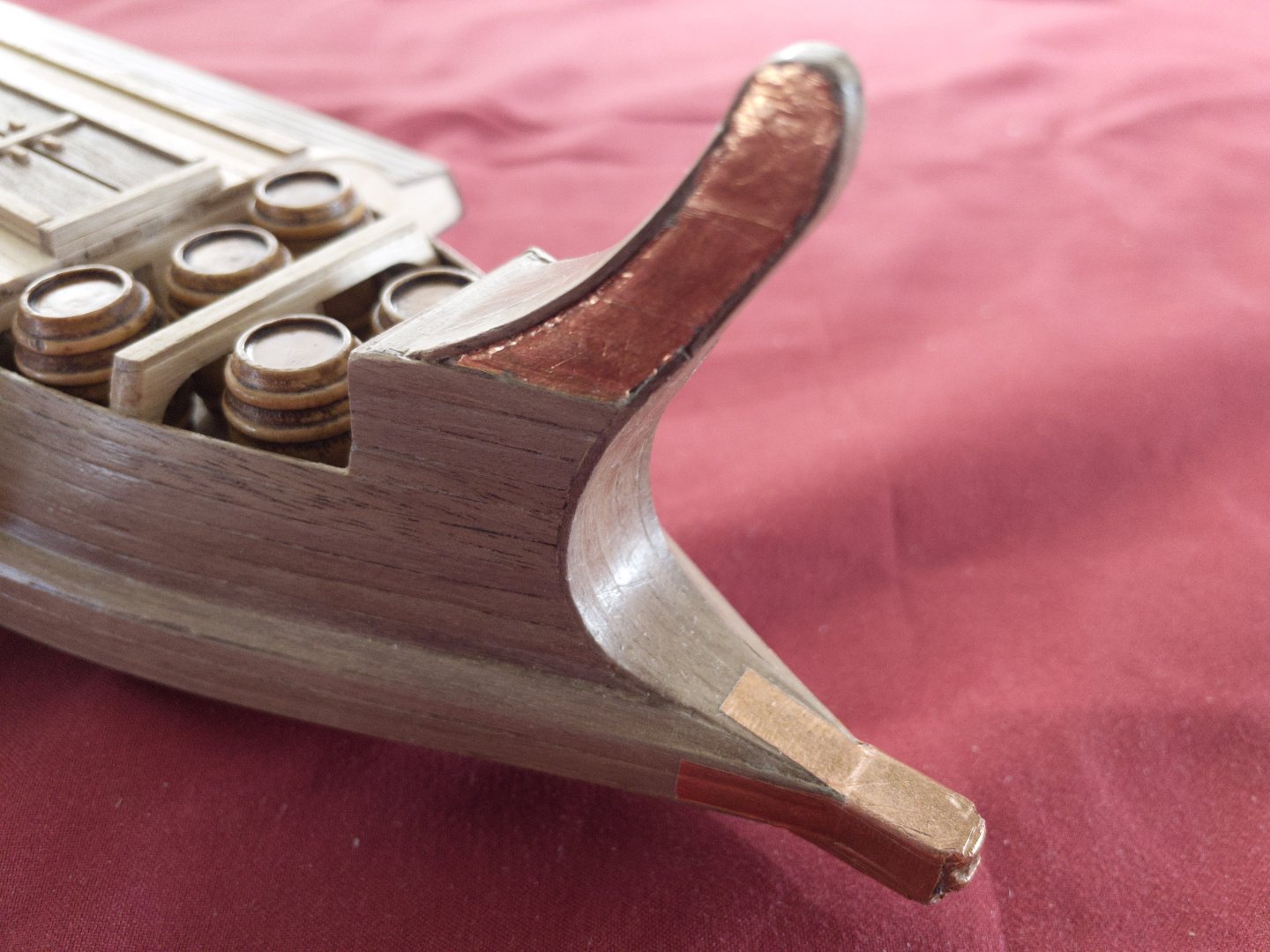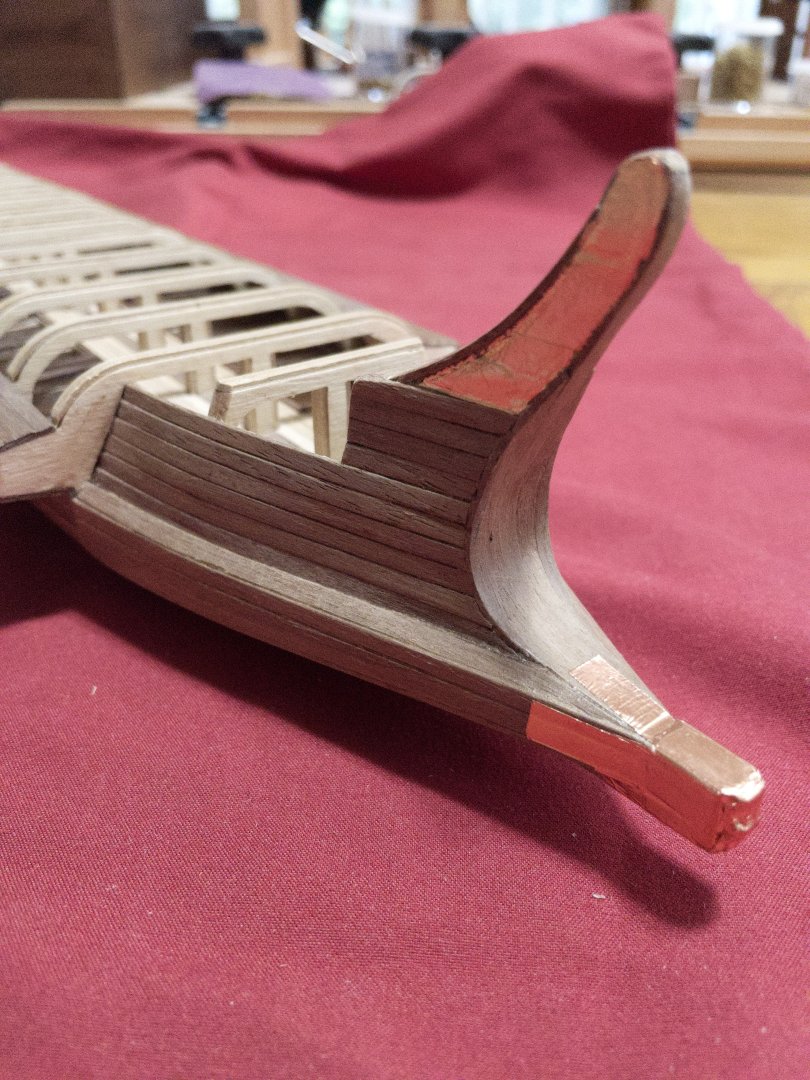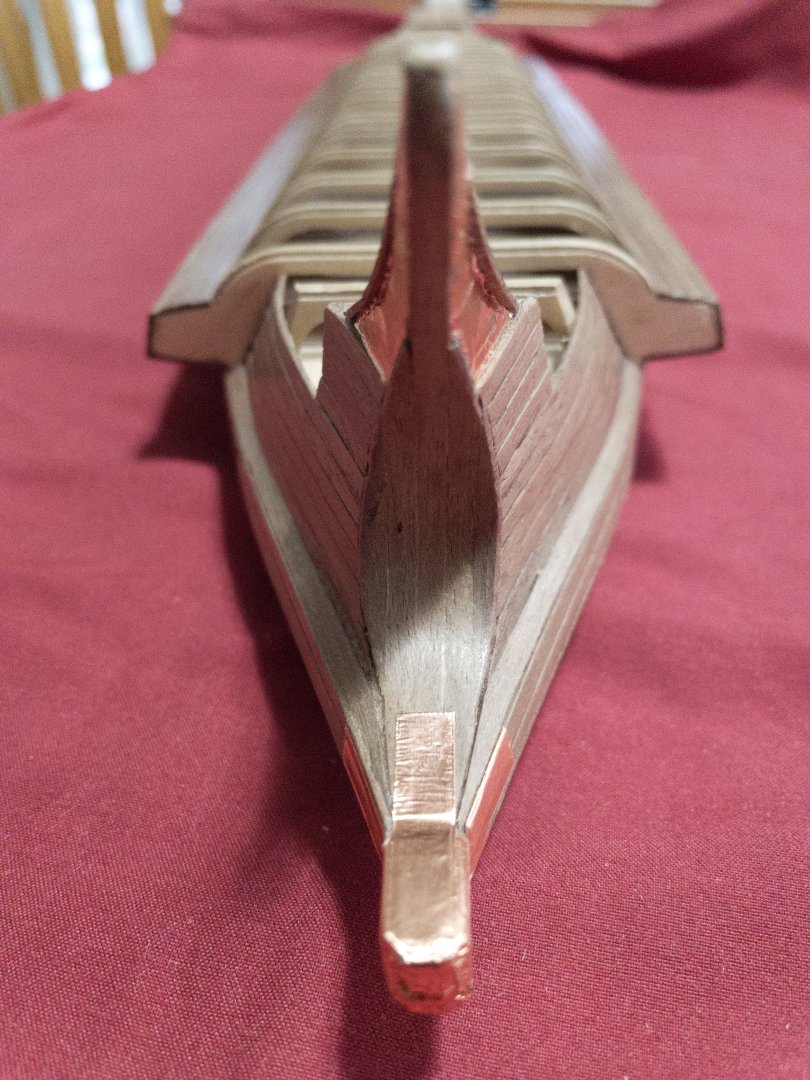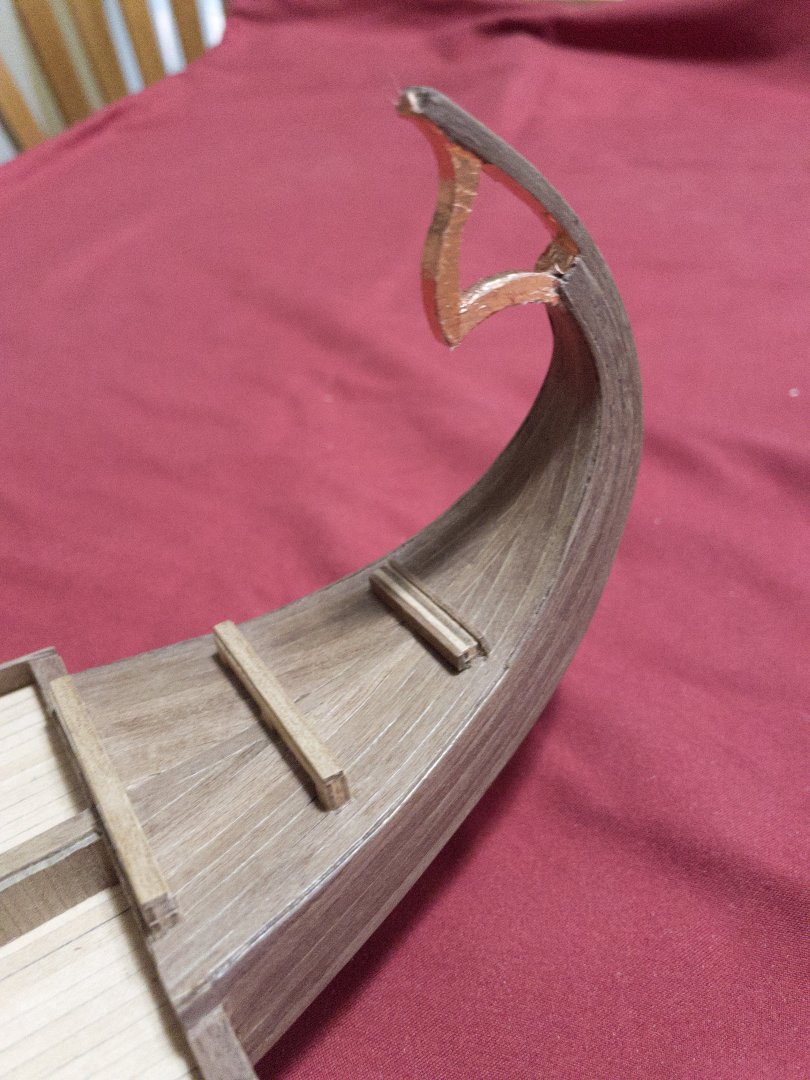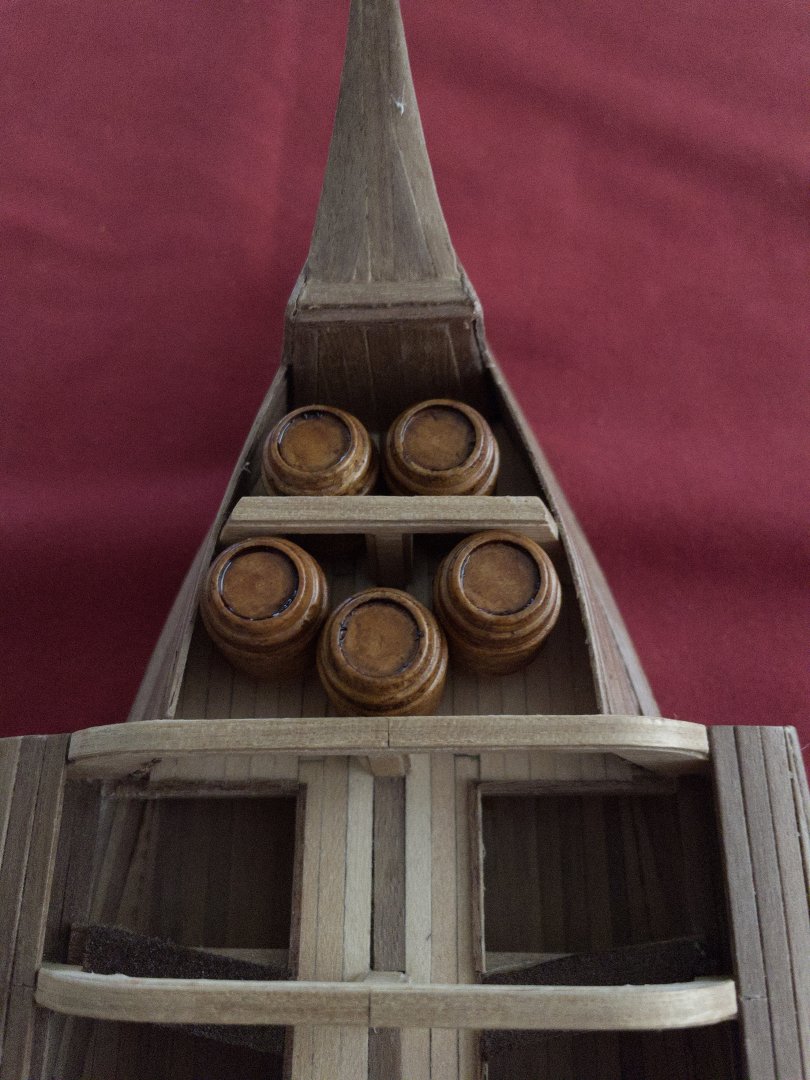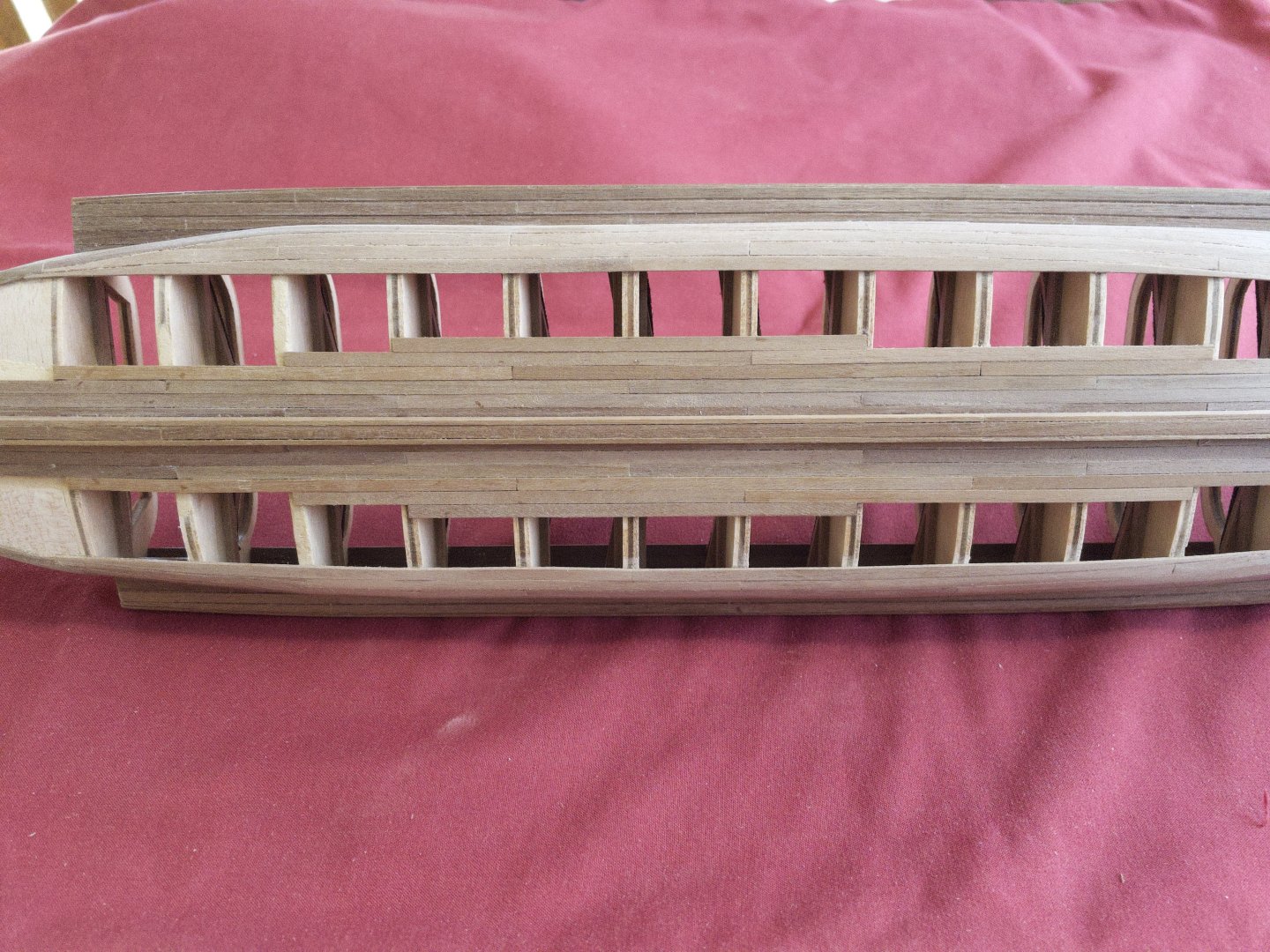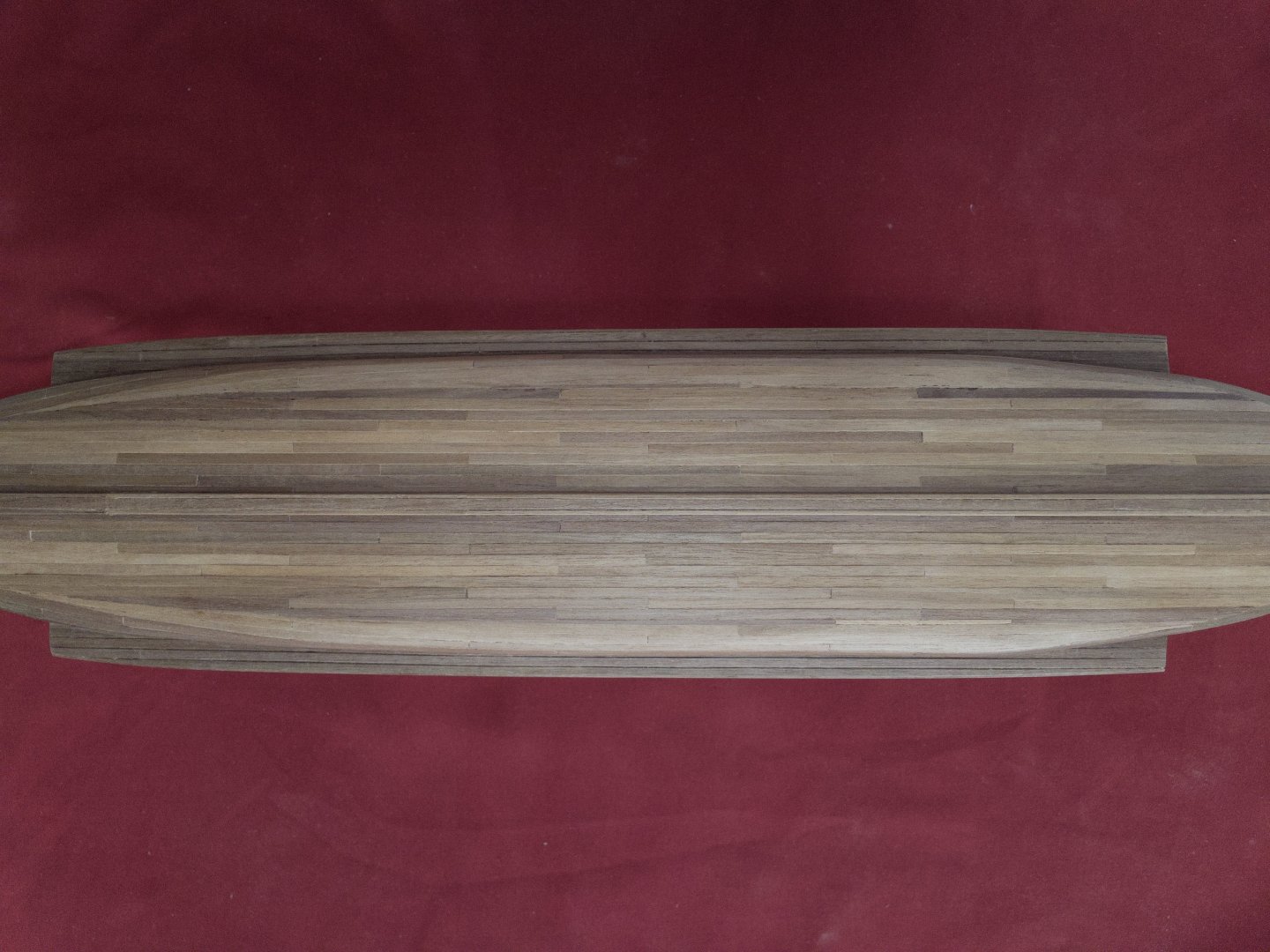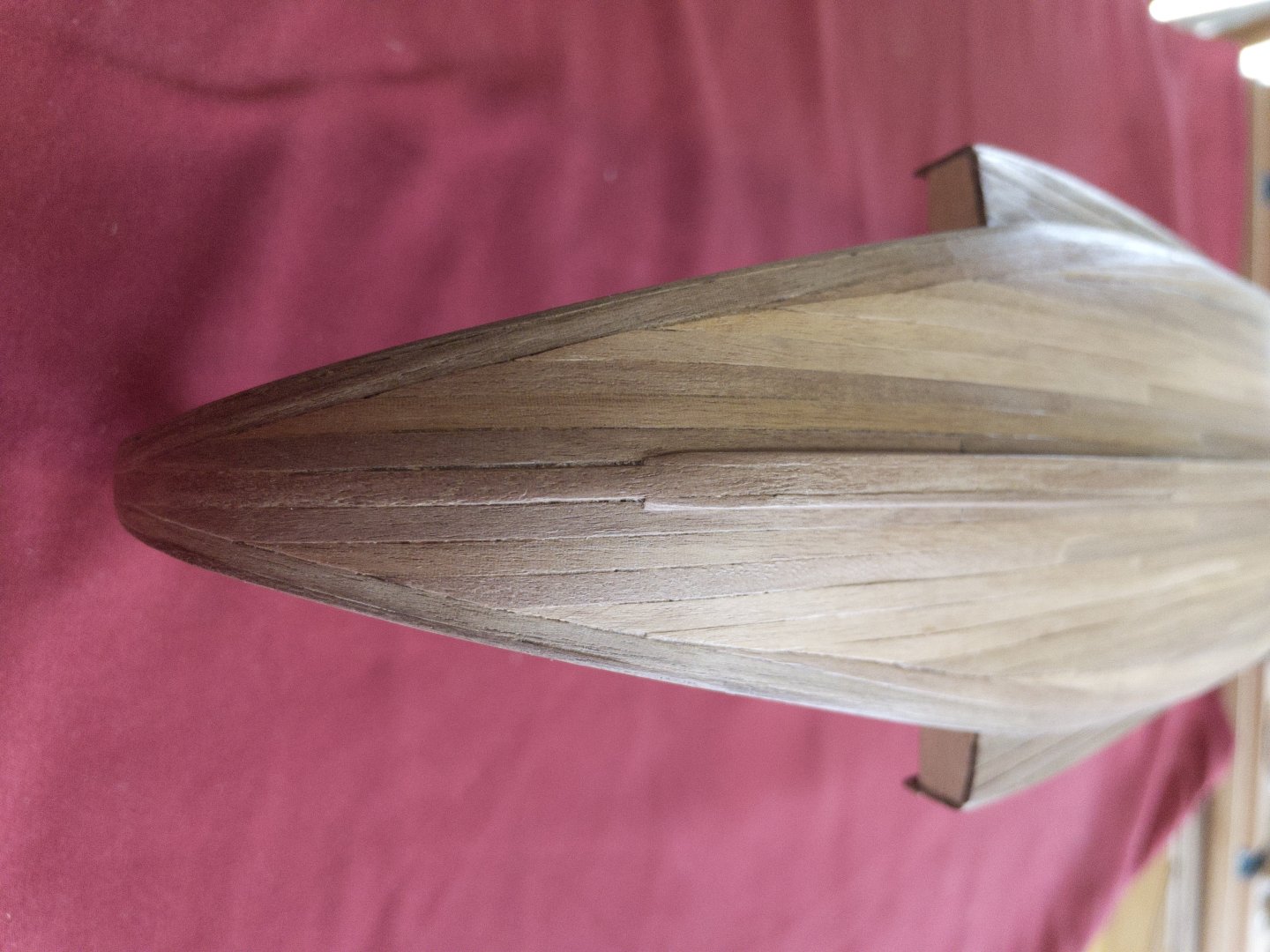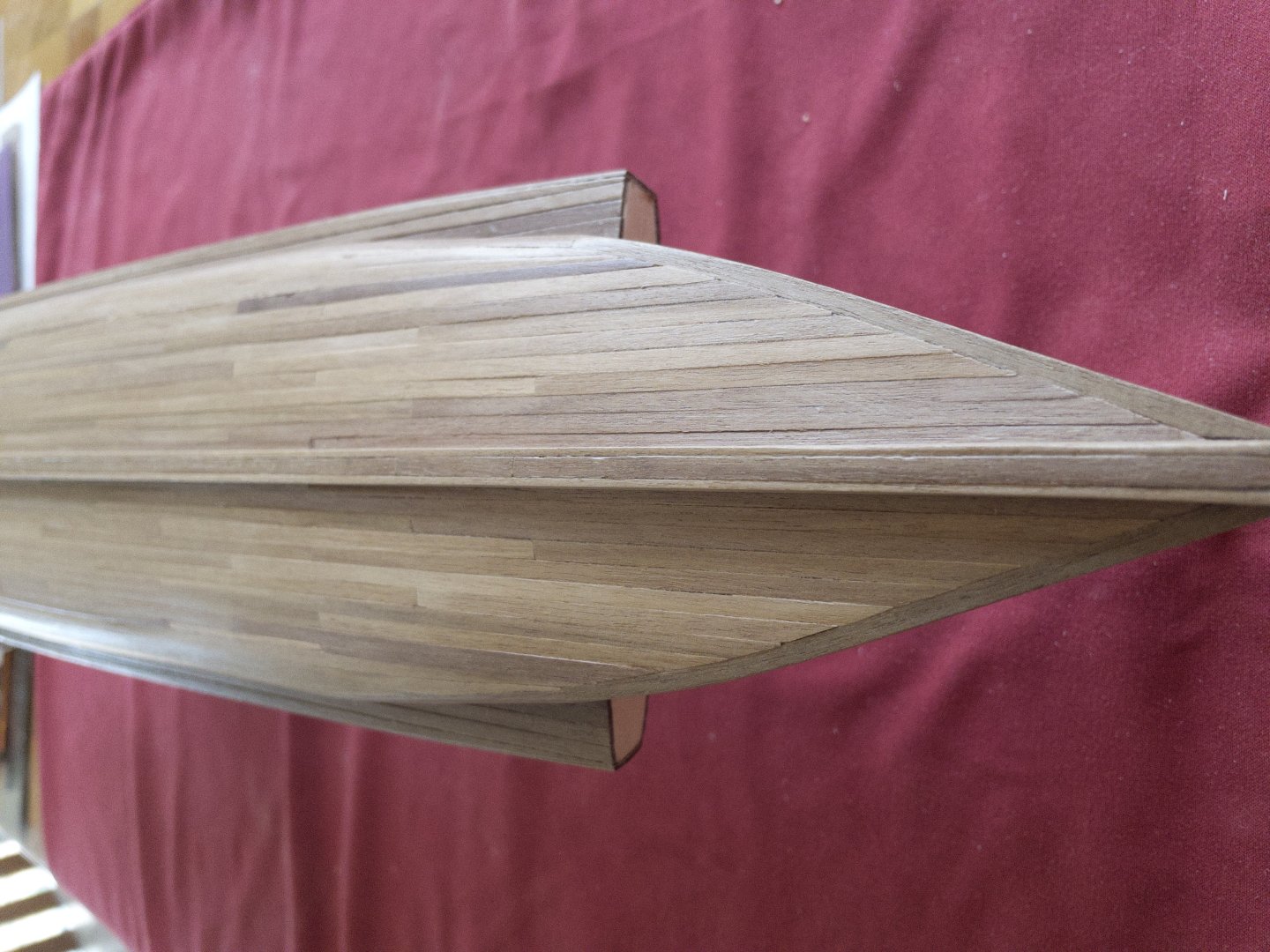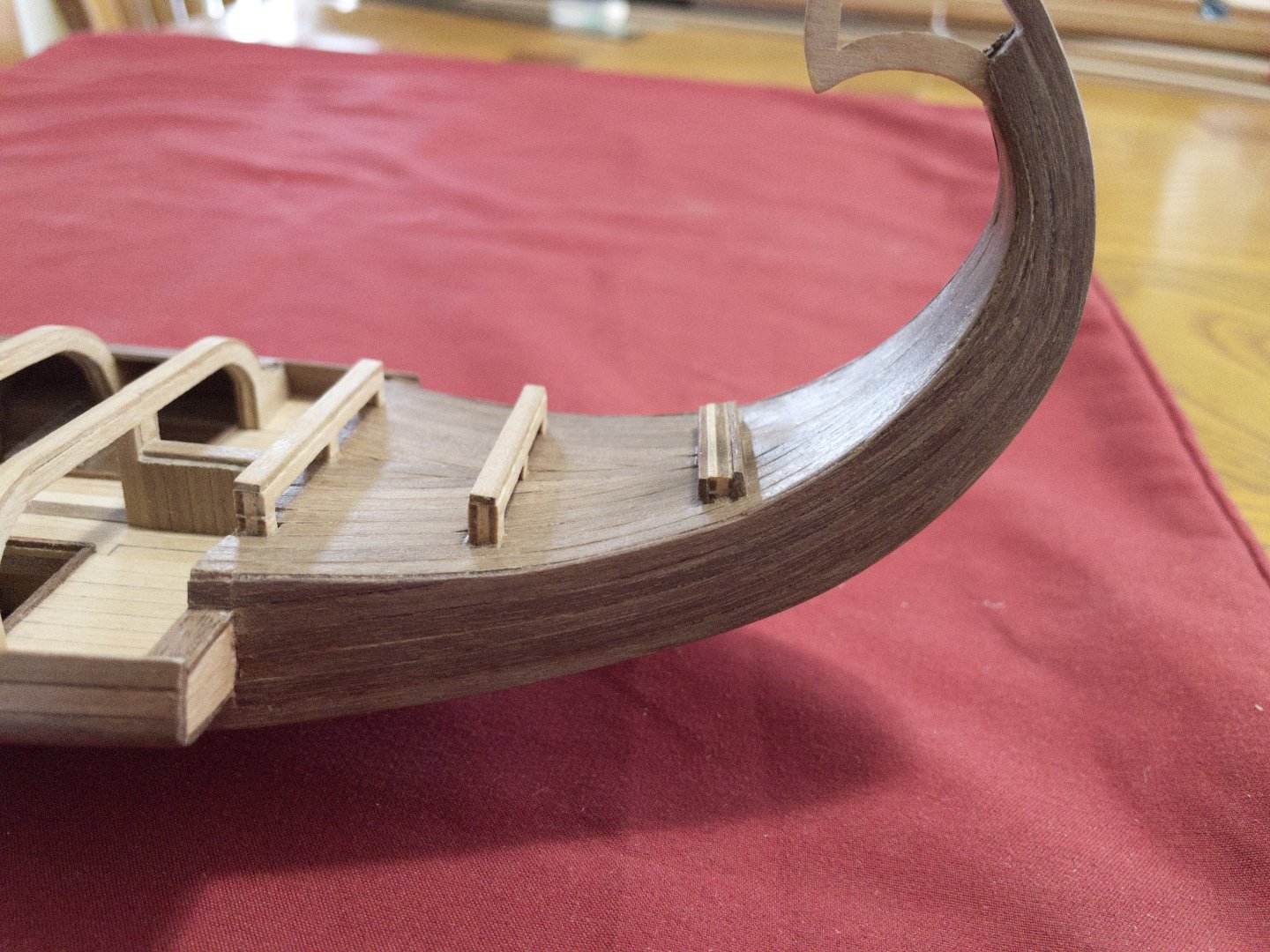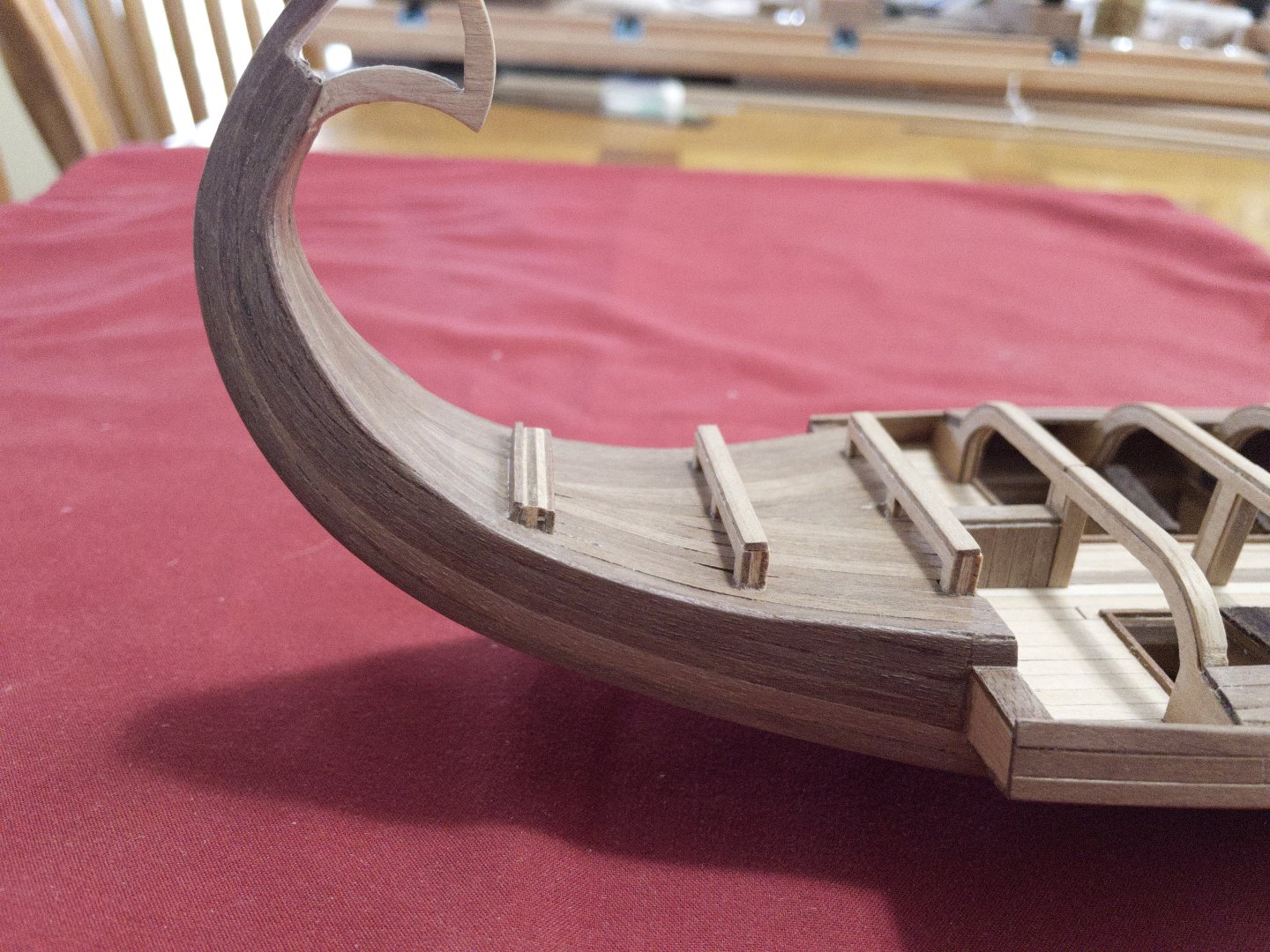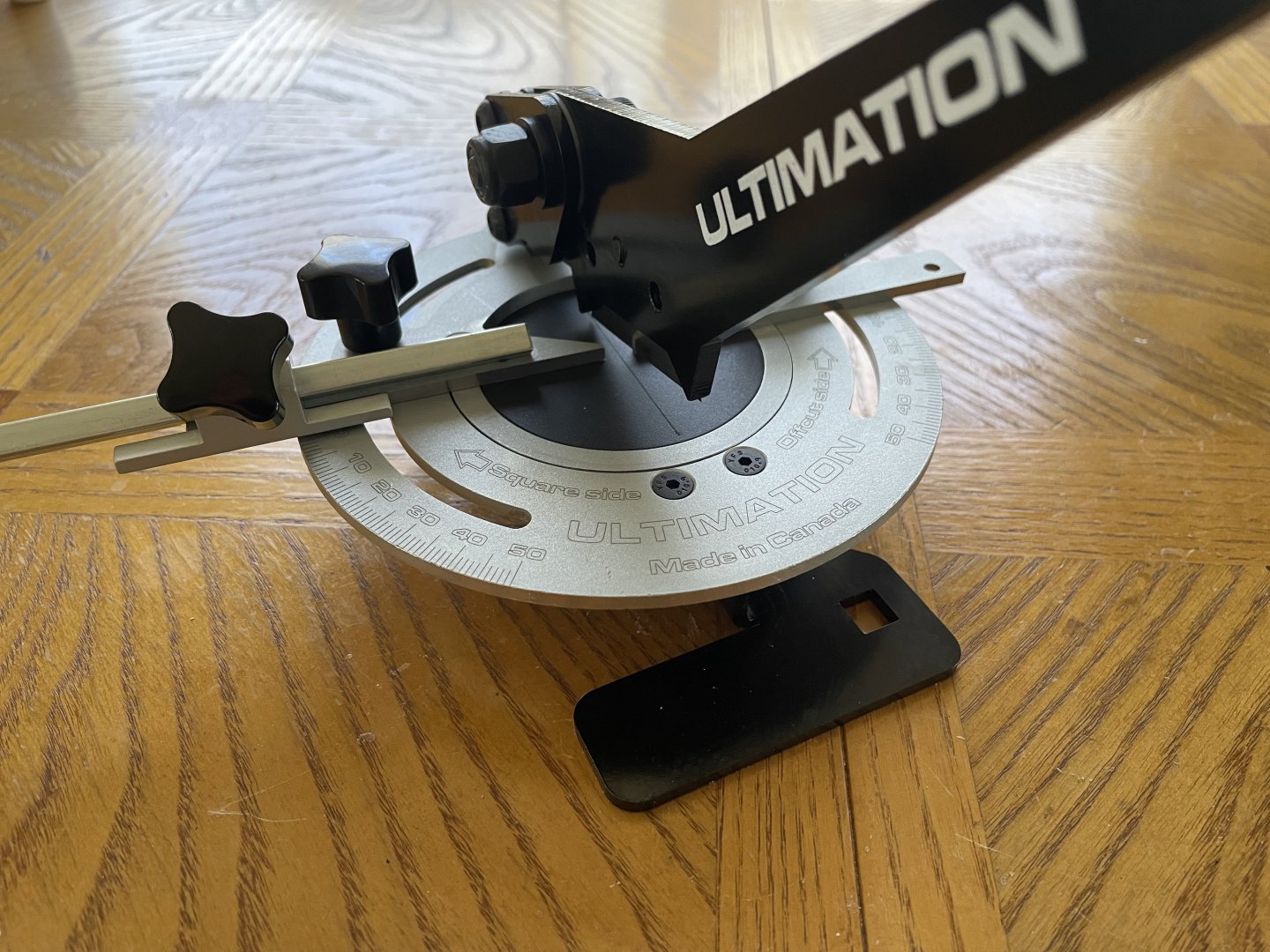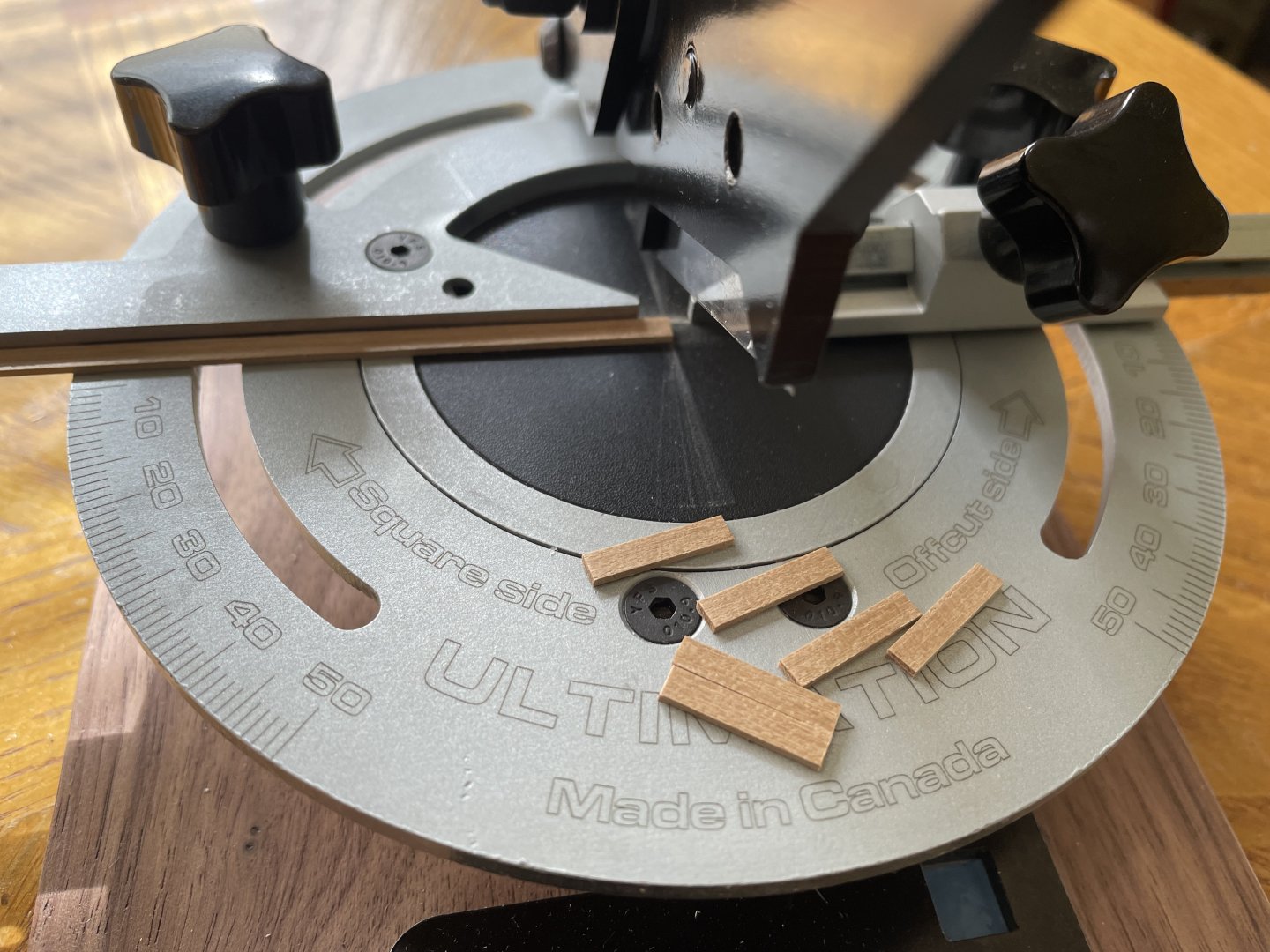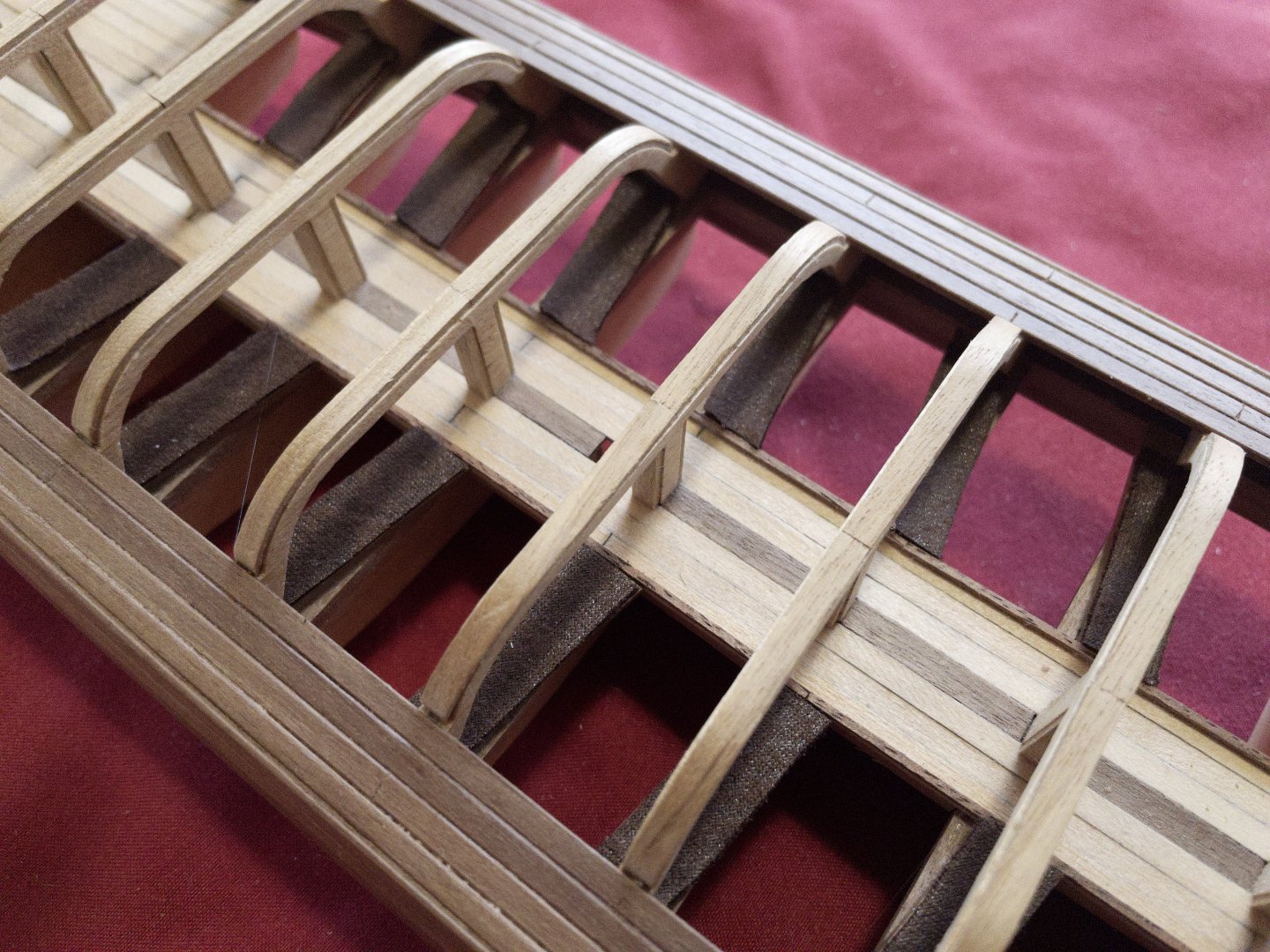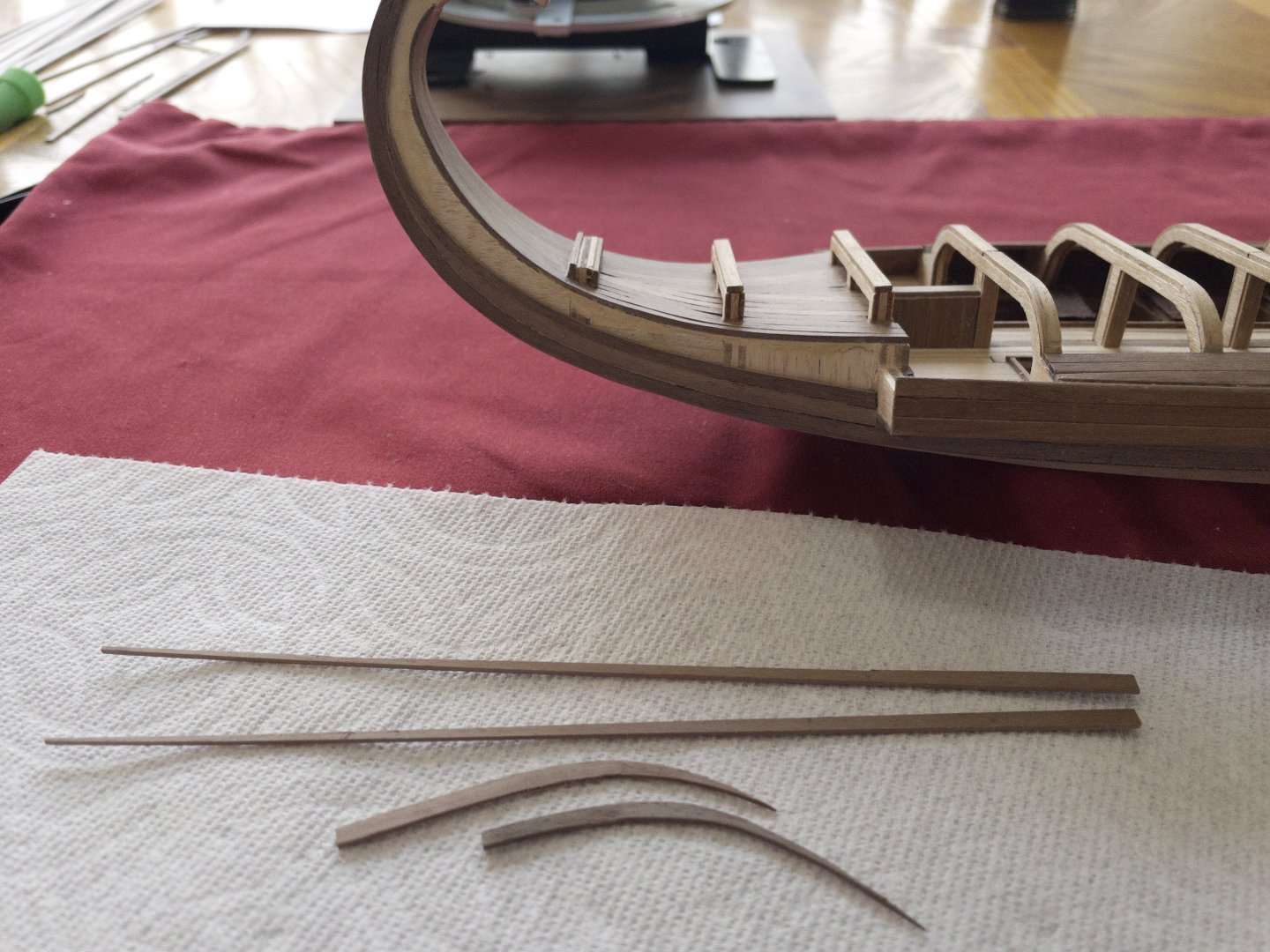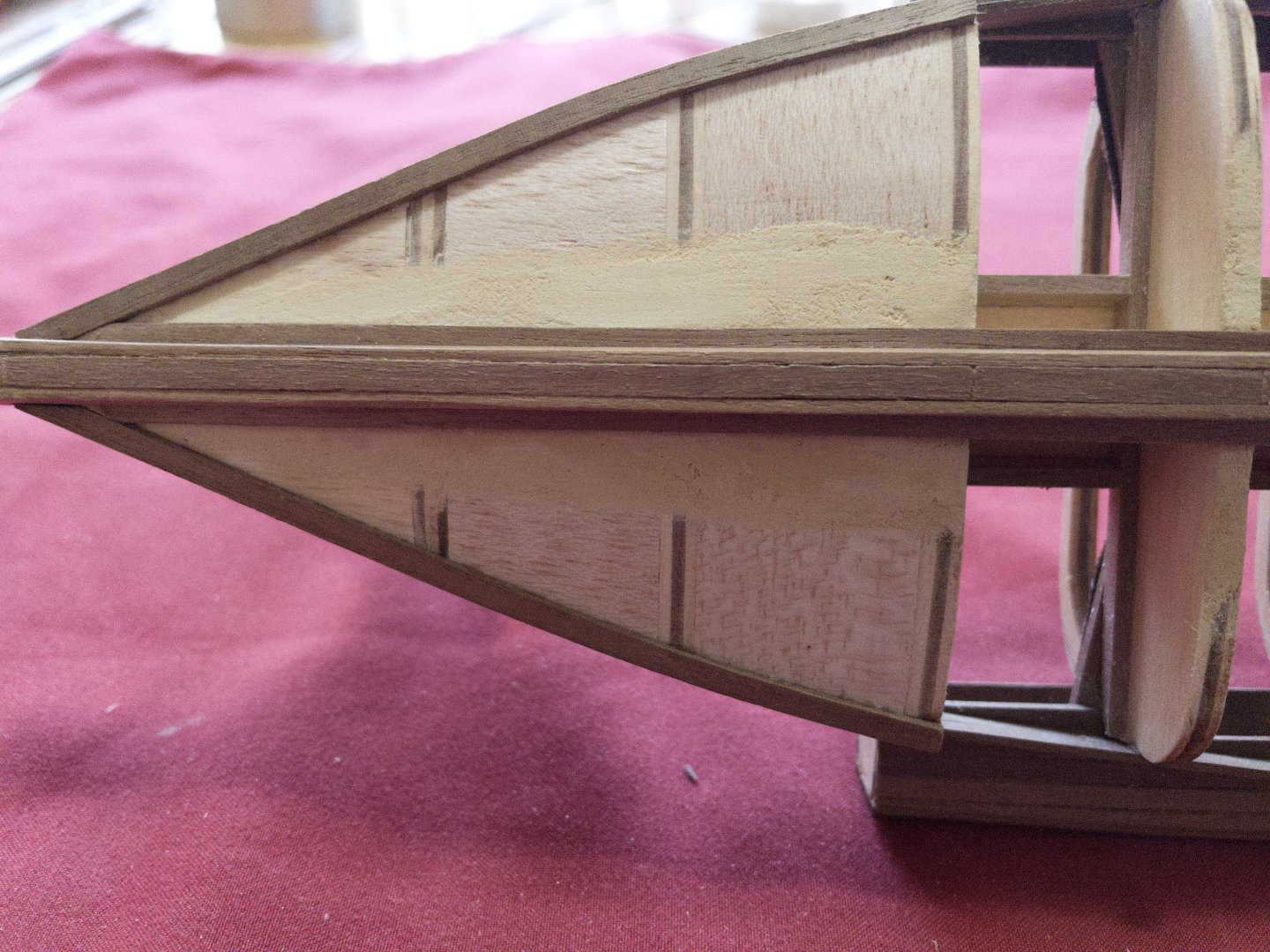-
Posts
287 -
Joined
-
Last visited
Content Type
Profiles
Forums
Gallery
Events
Everything posted by Loracs
-
Attaching Blocks: Not a huge update, but some may be curious about how I attached the blocks to the spars. Obviously, this is pretty basic for most of you... but I like documenting the build process in general. Basically, the pictures illustrate the steps. One thing to be careful of in the early steps is to have the sizing smug but lightly. With a serving rope, the sizing will lock in place otherwise. You still need to pull the ends of the rope to tighten the block and later to the spar. One end to tighten one loop, the other for the second. Experiment a little first. Once done, you can then "lock" everything down very well by pulling on the sizing, lock in place by adding a tiny drop of CA glue. This is zoomed in 3x. The block is 2.5mm. The is 0.35mm initially, likely 0.5mm after serving.
-
ok, I came across a small delay. I build, shaped and added the blocks to the spars few months ago... before starting the standing rigging. One thing I learned since (thanks Kirill4 for that) is that most of the blocks were set to spars and masts, even other fixtures using served lines. The reason THEN was to strengthen the rope in point of friction for durability. So, for realism, it is good to do that. However, there is a practical reason for modeler: When you fix in place small blocks to spars... the block's rope remains somewhat flexible (i.e. it can stretch a little). The problem is that we (or I) cut the block rope pretty close for esthetic. Adding CA glue to the end help keep it in place but the serving can still move a little under "stress" and the knot loosen. Sometime, even fall apart. Using a served rope for fixing blocks as two advantages: 1) serving harden significantly the rope, so it does not stretch much, 2) the serving act as grooves for the sizing, so there is far more resistance to pull and tug. Lastly, when serving a rope, I add a very thin layer of fabric glue to the rope using a toothpick. Thin enough so it is only under the serving and does not spill to the outside. It further helps to limit stretching, and help getting a clean serving that stay together when the rope is cut. Summary: I decided to cut and redo the blocks on the spars. Just guess how much pain having to redo a block that fall apart AFTER you have the spar set on the ship with ropes all around... not fun. FAR BETTTER to deal with it ahead of time. A small set back... but a mistake I won't be doing again.
-
Ok... I keep changing my mind. I don't like a full sail display because it covers too much overall. However, although I like furled sails... the material is too thick to have a good roll. I may have found a middle ground that I will test later (need to attach the sails to the spar first): Display the model with sails set semi-furled as set when drying the sails. Saw a couple pictures and I think it worth a try.
-
Furling top main sails: I cannot find much information about furling sails. Tried a few folding approaches (hopefully I will remember this one hehe!)... this one seems close. Am I on the right track? This is using the full sail (the one above top left). I don't really want to shorten them since they are all done now. This is only a test piece, please don't mind the ties (too big and wrong color), am just wondering about the overall shape? Let me know what you think?
-
Ratlines DONE!. My My that was tedious. Took several months, mainly because I just could not bring myself to do it. But the edge of starting a new ship motivates me to finish this one first. 1250 clove knots later... completed. Saw several approaches to the ratlines. For me, it was the simplest: a) tweeter and scissor, of course. b) a popsicle stick to adjust spacing as I go, c) a level to parallel to the water, and finally d) patience, a lot of it. This allowed me to easily reach behind to make the clove knots. Next step, more rigging and the sails. They were already made a few months ago.
-
Stand: It is time to get back to "The Revenge" after some time off building a Greek bireme. It's difficult to come back since I left off with only a fifth of the ratlines done. I have to say that this is not my preferred activity... by far. For a change of pace, and to work with wood again, I decided to tackle the stand. Got some pretty wood pieces and got to work. I want a solid and heavy base for such a large ship. The bulk is handmade using a simple design, incorporating a few pieces from the kit. I may not do another update until the ratlines are done... which will take a while. In addition there are the coming holidays. Here it is, the stand: Note: I am having still few additional transversals with the ship picture. Forgot, those are extra for later if i ever need them final (not glue).
-
Final update: Completed the build by adding a few accessories and temporary rigging. I'm not sure if I will be adding the 42 paddles. Let's say that the ship was "converted" into a transport and/or reconnaissance ship. This little ship will travel with me at Christmas as a gift. Will set up the final rigging then. Hope you enjoy. It's always fun to do those weekly updates. Short term, I will be returning to "The Revenge" to complete the build with the addition of the sails.
-
Deck: The deck is finally completed. The kit supplies little to build the floor-doors. I designed it a little differently. First, the frame is built using T-shaped strips (2x2 mm strips glued over a 3.25mm strips). This creates the little space around the doors that I was looking to achieve, as well as a recessed layout. Metal RAM: the copper is starting to oxidize slowly, which is a little bit more realistic. That's all for this week.
-
The caulking is just perfect like this... well done. With the length of time it takes to complete a ship, it often almost irresistible to have a peak at the final result. I time, I even finish a section if I know there is no more work to be done. Fantastic deck, well worth the time. New tools!!! come on... I don't have those, please stop teasing!! Hehe 🤩
-
Hull: closing the gap, a little more, done! I really like the mix and match color pattern. A beauty in its own right. Dozens of color variations. This is the advantage of planking at 15-20' length or 10-12 cm/plank. Stern: only a few words can truly summarize the experience: Holy @#$@@ #$#$#@@@!! Special mention: the Ultimation slicer is really worth it. Accurate and reproducible cuts. The blade is so sharp... and stays sharp. I'm really liking it. For me, it was worth the price if you are planning on multiple ships. Who among us is not!
-
I thought that this build (a planned gift to my father) would be a quick but interesting one. Still quite fun to do BUT it is indeed nothing close to a quick build. If you are not careful the nice lines can turn awful very fast. It is indeed a tricky planking exercise, with the drawback that you have virtually no documentation or any guides from the kit itself. Not much repetition... it always keeps you on your toes. A lot of planks spilling, curving (with and again the grains) and shaping.
-
Seats: reading about the greek bireme and trireme, I noted a mention that the seats were likely covered with leather to minimize blisters. That makes sense to me and went ahead and added small leather patches to the interior seats. Stern: side curving of 3mm strips only brings you so far. As you plank inwards the curvature increases and there is no way to keep up. I had to come up with a plan B. I started spilling the planks. Being smaller in width, it can be curved more aggressively. General planking: The difficulty of this build is the sharp edges in many areas. In other words, how to get clean results at the junction. To address this, I always start a new area by "framing" it. Then you have a guide for the remainder.
-
very nice... I love the look of it. It all worth the stress of the redo. In fact, I like it so much that I want to incorporate the technique is my next build. Question: In practice, how do you carve the donor and receiving strips, so that it aligns so well at the join. Just want to learn from the expert ;_)
About us
Modelshipworld - Advancing Ship Modeling through Research
SSL Secured
Your security is important for us so this Website is SSL-Secured
NRG Mailing Address
Nautical Research Guild
237 South Lincoln Street
Westmont IL, 60559-1917
Model Ship World ® and the MSW logo are Registered Trademarks, and belong to the Nautical Research Guild (United States Patent and Trademark Office: No. 6,929,264 & No. 6,929,274, registered Dec. 20, 2022)
Helpful Links
About the NRG
If you enjoy building ship models that are historically accurate as well as beautiful, then The Nautical Research Guild (NRG) is just right for you.
The Guild is a non-profit educational organization whose mission is to “Advance Ship Modeling Through Research”. We provide support to our members in their efforts to raise the quality of their model ships.
The Nautical Research Guild has published our world-renowned quarterly magazine, The Nautical Research Journal, since 1955. The pages of the Journal are full of articles by accomplished ship modelers who show you how they create those exquisite details on their models, and by maritime historians who show you the correct details to build. The Journal is available in both print and digital editions. Go to the NRG web site (www.thenrg.org) to download a complimentary digital copy of the Journal. The NRG also publishes plan sets, books and compilations of back issues of the Journal and the former Ships in Scale and Model Ship Builder magazines.



